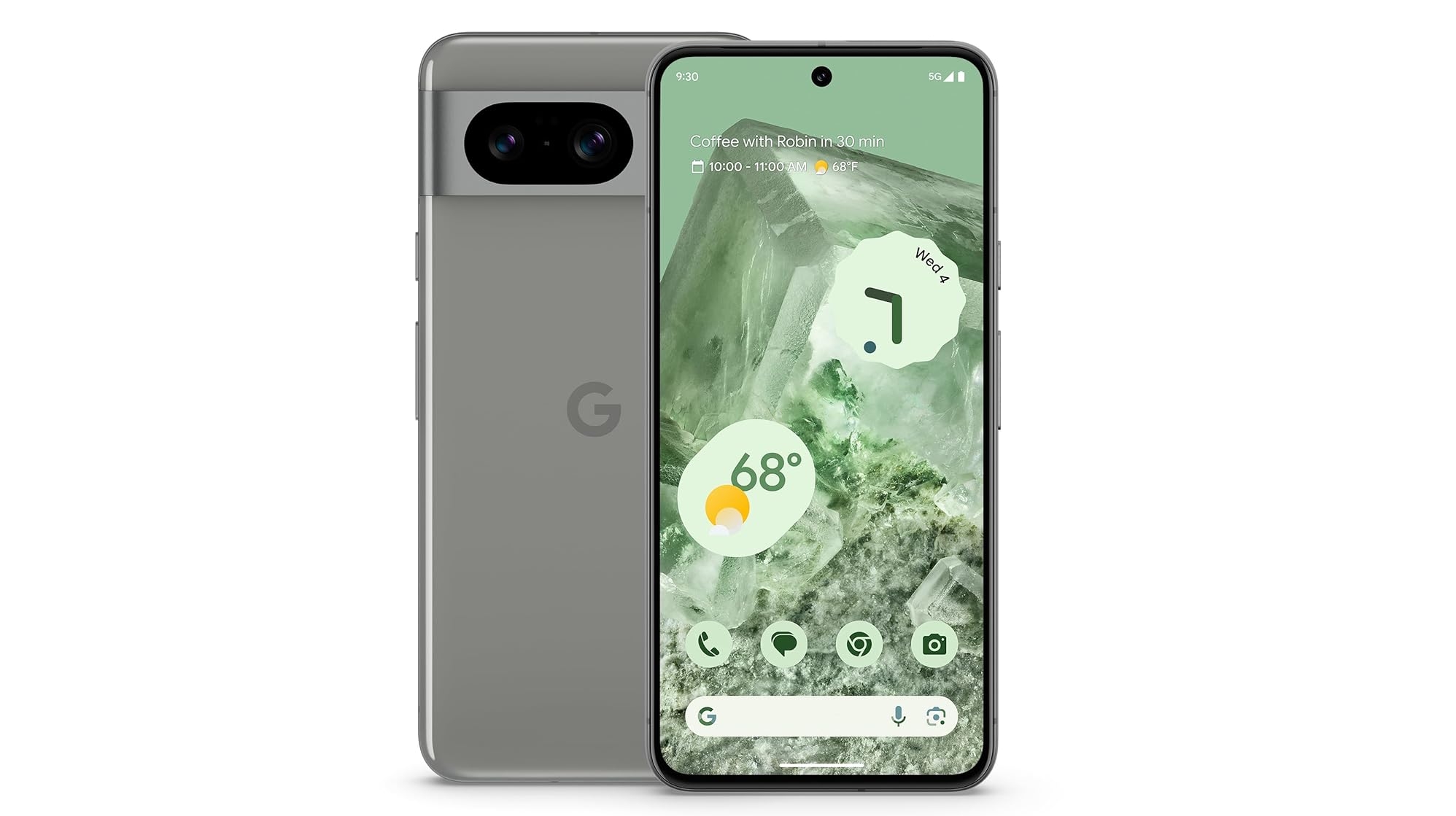
Weight: 187g
Dimensions: 150.5 x 70.8 x 8.9mm
Screen size: 6.2-inch
Resolution: 1080 x 2400
CPU: Tensor G3
RAM: 8GB
Storage: 128GB/256GB
Battery: 4,575mAh
Rear camera: 50MP+12MP
Front camera: 10.5MP
The Google Pixel 8 has most of the core features of the Pixel 8 Pro, including AI tricks, a 50MP main camera, a Tensor G3 chipset, and a 120Hz screen. But it lacks a telephoto camera, and its screen and battery also aren't quite a match for Google's top phone.
For
- New Tensor chip
- Refreshed design
- AI camera tricks
Against
- Design changes are minor
- Minimal camera upgrades
- No temperature sensor
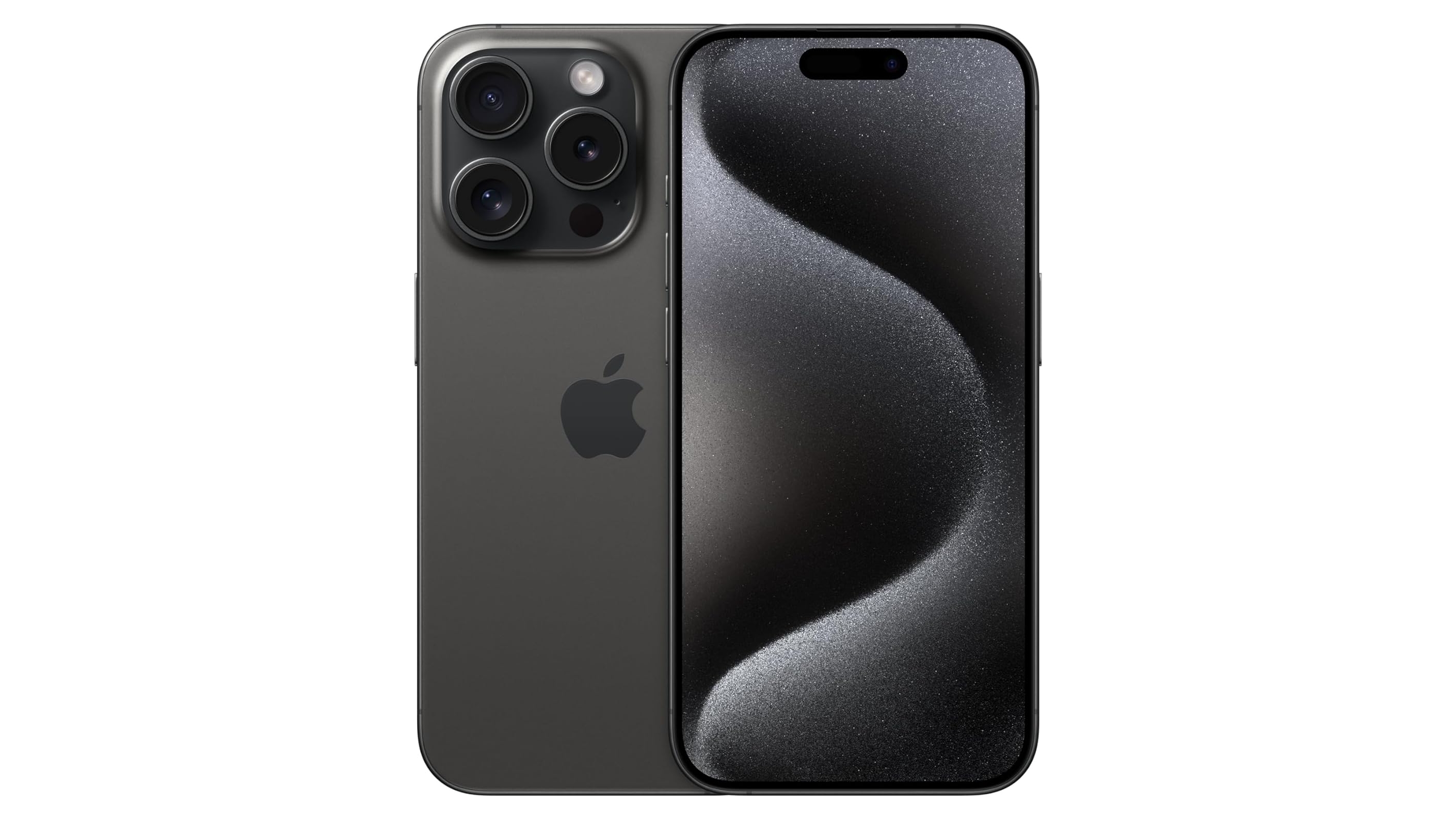
Weight: 187g
Dimensions: 146.6 x 70.6 x 8.3mm
Screen size: 6.1-inch
Resolution: 1179 x 2556
CPU: A17 Pro
RAM: 8GB
Storage: 128GB/256GB/512GB/1TB
Battery: 3,274mAh
Rear camera: 48MP+12MP+12MP
Front camera: 12MP
The iPhone 15 Pro is extremely powerful, and it's also smaller and lighter than the Pixel 8 Pro, but it's slightly behind Google's flagship in most other specs.
For
- Beautiful titanium design
- Finally, USB-C connectivity
- All new A17 Pro chip
Against
- Niche camera upgrades
- No change to battery longevity
- Limited to 3x zoom
For anyone in the market for an affordable alternative to the iPhone 15 Pro, we’d generally make the obvious recommendation of an iPhone 15. But there could be another option in the shape of the Google Pixel 8.
What if we told you iPhone Pro fans that you could get another compact, powerful flagship phone with super-clean software and design, a great camera, and a fluid display, all at a way cheaper price? Yep, that’s the Pixel 8 for you.
Might the Pixel 8 actually be a better buy than the iPhone 15 Pro, then? There’s only one way to find out.
We decided to put two of the year’s biggest smartphone releases head to head, spec for spec, and try to come to some kind of reasonable conclusion. This one’s going to be interesting, so read on for our Google Pixel 8 vs iPhone 15 Pro showdown.
Google Pixel 8 vs iPhone 15 Pro: specs comparison
Before we look more closely at the similarities and differences between the Google Pixel 8 vs iPhone 15 Pro, here’s a list of the phones' core specs, so you can see how they compare on paper.
| Google Pixel 8 | iPhone 15 Pro | |
|---|---|---|
| Dimensions: | 150.5 x 70.8 x 8.9mm | 146.6 x 70.6 x 8.3mm |
| Weight: | 187g | 187g |
| Display: | 6.2-inch 20:9 adaptive 60Hz to 120Hz 'Actua' OLED | 6.1-inch 'ProMotion Super Retina XDR' OLED |
| Resolution: | 1080 x 2400 | 1179 x 2556 |
| Refresh rate: | Adaptive 60Hz to 120Hz | Adaptive 1Hz to 120Hz |
| Chipset: | Google Tensor G3 | A17 Pro |
| RAM: | 8GB (LPDDR5X) | 8GB |
| Storage: | 128GB, 256GB (UFS 3.1) | 128GB, 256GB, 512GB, 1TB |
| Rear cameras: | 50MP wide, 12MP ultra-wide | 48MP wide, 12MP ultra-wide, 12MP 3x telephoto |
| Front camera: | 10.5MP | 12MP |
| Battery: | 4,575mAh | 3,274mAh |
| Charging: | 27W wired, 18W wireless (2nd-gen Pixel Stand), 12W wireless (Qi) | 27W wired, 15W wireless (MagSafe), 7.5W wireless (Qi) |
| Colors: | Obsidian, Hazel, Rose | Black Titanium, White Titanium, Blue Titanium, Natural Titanium |
Google Pixel 8 vs iPhone 15 Pro: price and availability
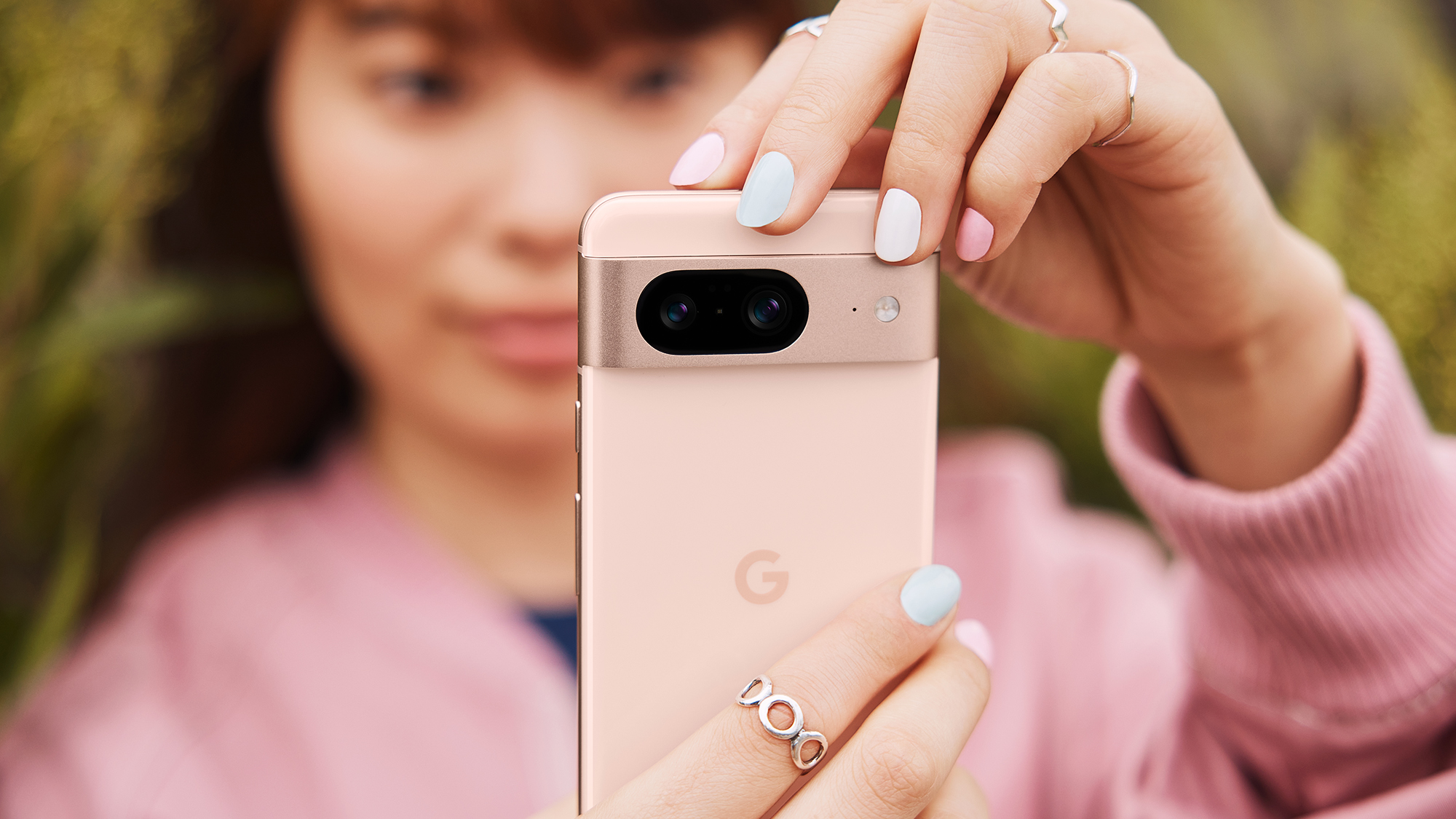
The Pixel 8 and the iPhone 15 Pro launched at a similar time, with the iPhone coming to market on September 12, 2023, and the Pixel 8 Pro following on October 4.
Google Pixel 8 pricing starts at $699 / £699 / AU$1,199 for the 128GB model, and there’s just the one upgrade path. You can specify a 256GB variant for $759 / £759 / AU$1,299.
That’s considerably cheaper than the iPhone 15 Pro, which starts from $999 / £999 / AU$1,849 for the 128GB model. The 256GB model costs $1,099 / £1,099 / AU$2,049, while the 512GB model costs $1,299 / £1,299 / AU$2,399. There’s also a 1TB model that costs $1,499 / £1,499 / AU$2,749.
The tricky question is whether the iPhone 15 Pro really be $300 / £300 better than the Pixel 8. Well a lot will depend on how ingrained you are in the Apple and iOS ecosystem, but in terms of pure hardware, we'd say the gap between the two phones isn't enormous.
Google Pixel 8 vs iPhone 15 Pro: design and display
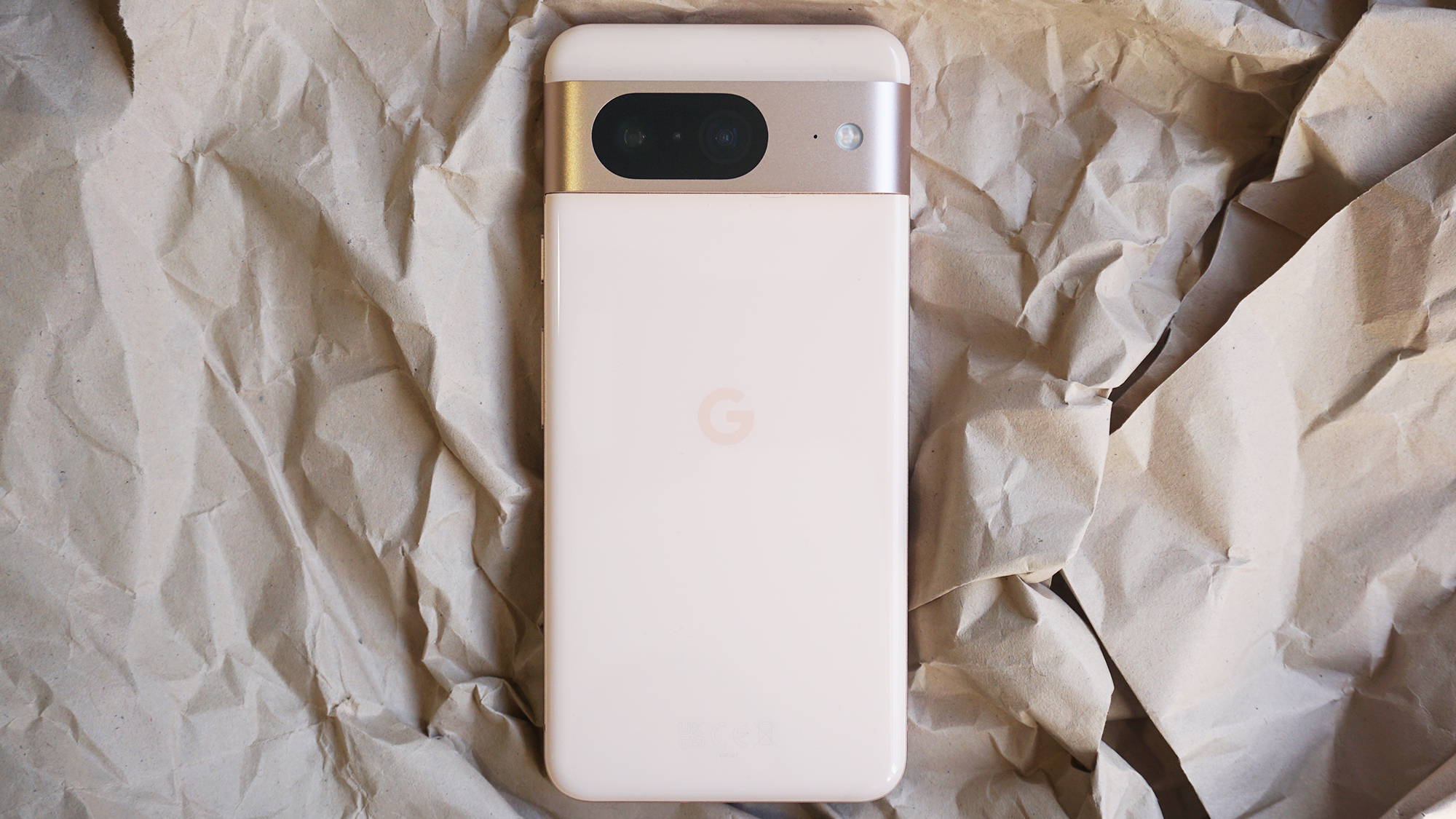
There are phone manufacturers out there who follow Apple’s lead a little too closely, but thankfully, Google isn’t one of them. Especially not when it comes to the matter of smartphone design.
While these two phones are similarly sized, with the iPhone being slightly shorter and thinner, but about the same thickness and exactly the same 187g weight, they look totally different.
Google’s design language is much curvier and softer – if glass and metal can ever be deemed ‘soft’ – with rounded corners and edges. Even the camera module, which takes up the whole width of the phone and features the phone’s only sharp angles, melts away into the frame.
Apple has gone with a strikingly angular look in recent years, with flat surfaces all around. It has started to soften its stance with the iPhone 15 Pro, however, which features a slightly rounded finish to the metal edges.
Talking of metal edges, there’s a fundamental difference in composition here. The Pixel 8 goes with a standard aluminum finish, whereas Apple layers on some super-tough titanium. They both feel premium, but the iPhone 15 Pro even more so.
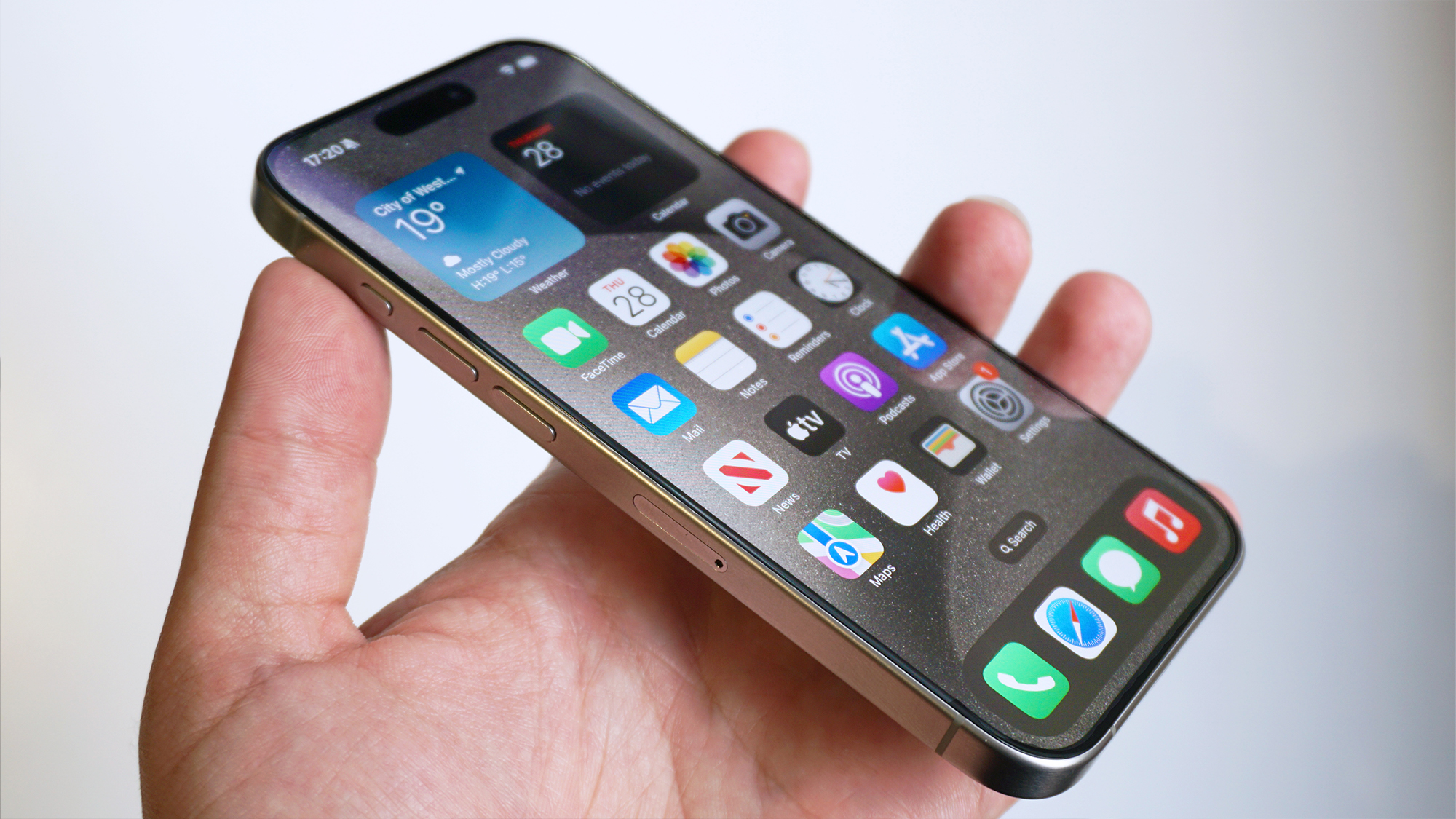
That extends to the iPhone’s use of a matte finish on the rear, which looks and feels slightly classier than the Pixel 8’s shiny finish. Neither of them exactly excites with their bland color options, though.
Apple has also added a programmable Action Button to the left side of the Pro, which is the kind of customizable feature you might have expected from a more enthusiast Android device.
Around front, the eagle-eyed will notice a couple of other premium flourishes in the iPhone 15 Pro’s favour. For one thing, the bezels are slimmer and more uniform on the Apple device. For another, Apple has its Dynamic Island where the Pixel 8 has a mere hole punch selfie cam.
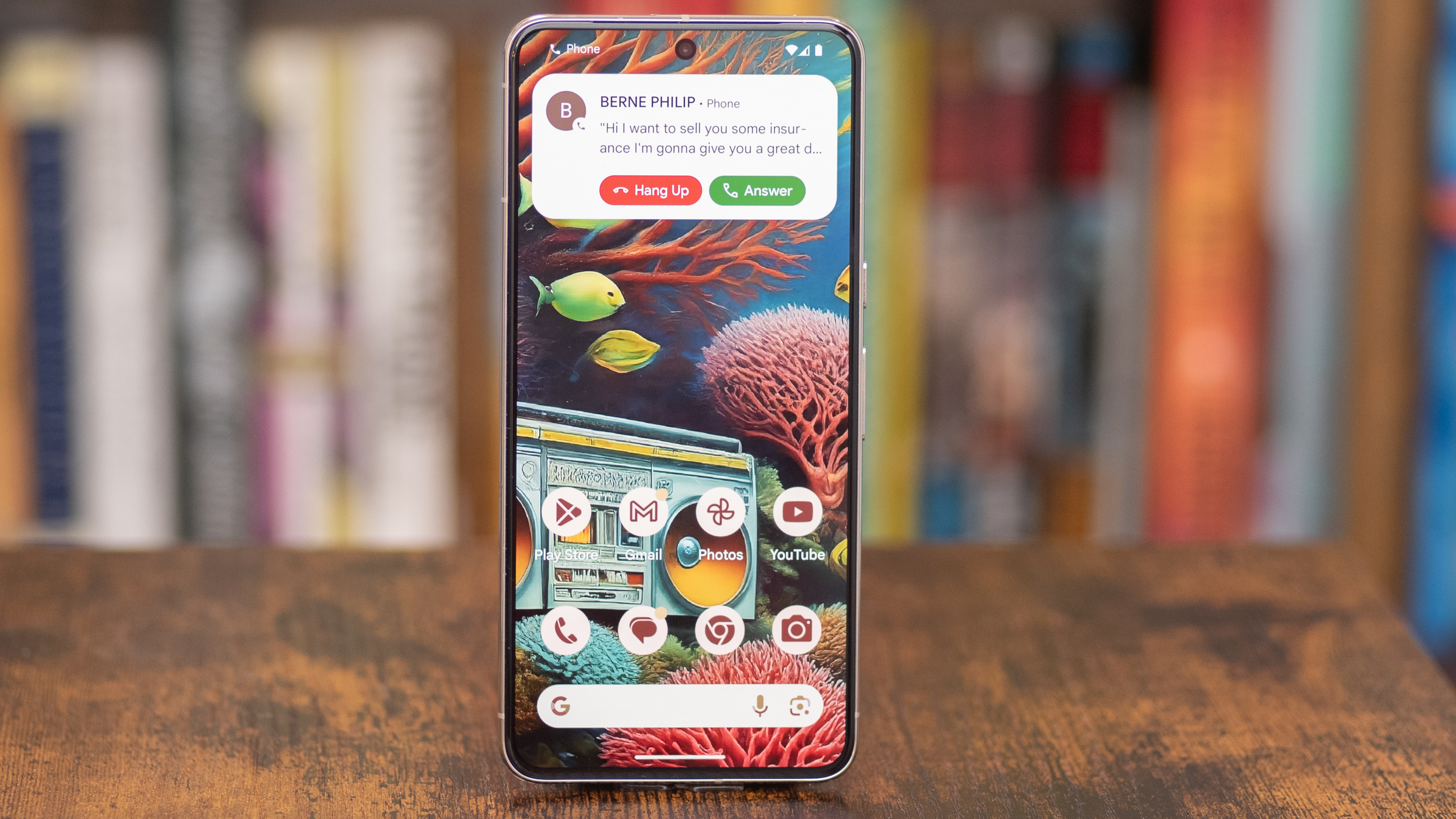
Technically both can facilitate facial recognition, but Apple’s solution is more secure and just plain better. Beyond that, the Dynamic Island provides heads-up UI information such as Uber updates, navigation instructions, and currently playing music.
In terms of the screens, there are some interesting parallels and differences. The Pixel 8 display is ever so slightly bigger at 6.2 inches vs 6.1 inches. It’s not as sharp, though, with the iPhone 15 Pro getting to 1179 x 2556 against the Pixel 8’s 1080 x 2400.
Both are vibrant OLED panels that can hit a peak brightness of 2,000 nits, which is very bright indeed.
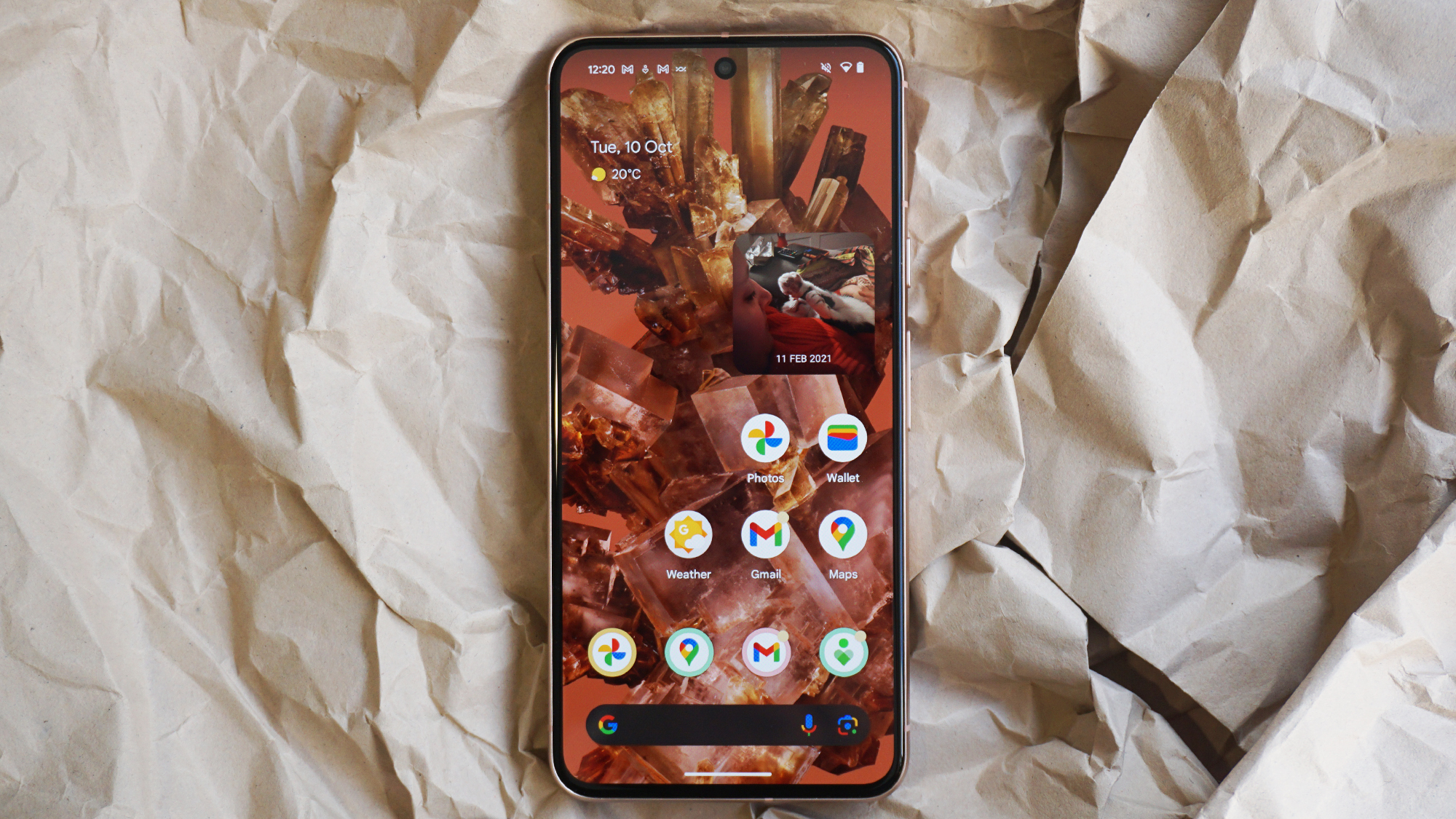
Unlike the iPhone 15, the Pixel 8 manages to achieve full 120Hz refresh rate parity with the more expensive iPhone 15 Pro. Well, not quite parity. While both can top out at 120Hz, only the iPhone can drop right down to 1Hz, enabling more nuanced power management and a more advanced always-on LTPO display.
All in all, we’d give the edge in design and display terms to the iPhone 15 Pro. Whether that gap is a $300 / £300 one is another matter entirely.
Google Pixel 8 vs iPhone 15 Pro: cameras
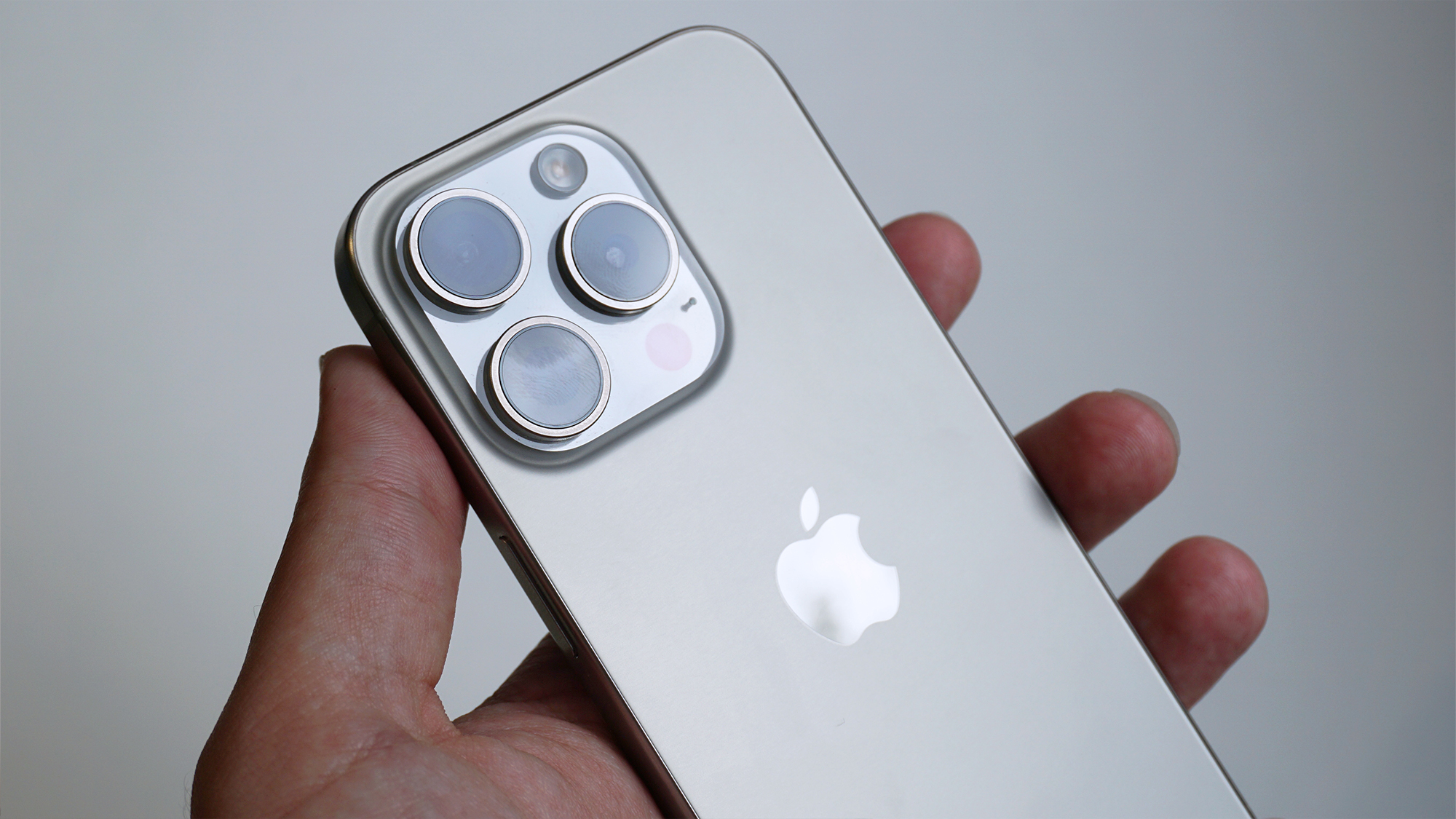
The ‘Pro’ effect can be seen most obviously in the iPhone 15 Pro’s extra camera. As well as a 48MP main sensor and a 12MP ultra-wide, you also get a dedicated 12MP 3x telephoto camera.
With the Pixel 8, you only get a 50MP main camera and a 12MP ultra-wide. Any zooming you do with it will involve cropping in on that main sensor.
The iPhone’s main sensor is fractionally bigger (1/1.28“ vs 1/1.31”), shoots more detailed shots (24MP vs 12.5MP), and has better stabilisation (sensor-shift OIS vs regular OIS). The Pixel 8 boasts a slightly larger f/1.7 aperture (vs f/1.8 in the iPhone) in return, but that’s about its only hardware advantage.
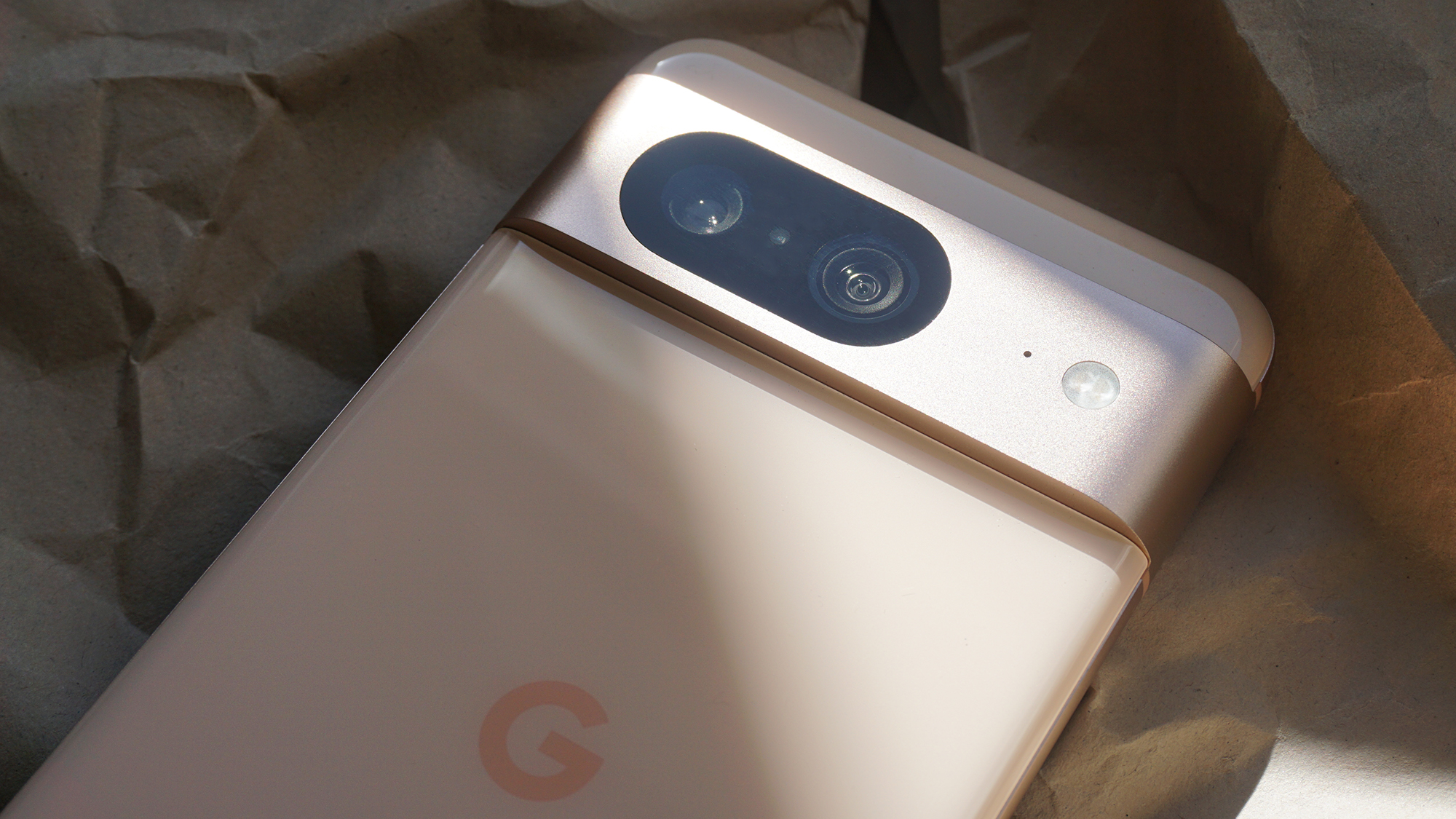
Of course, Google’s photographic strength has never been its hardware, but rather its machine learning and image processing chops.
With the Pixel 8 you can remove background interlopers with the improved Magic Eraser, and can now even make it so that everyone in a group shot is smiling at once.


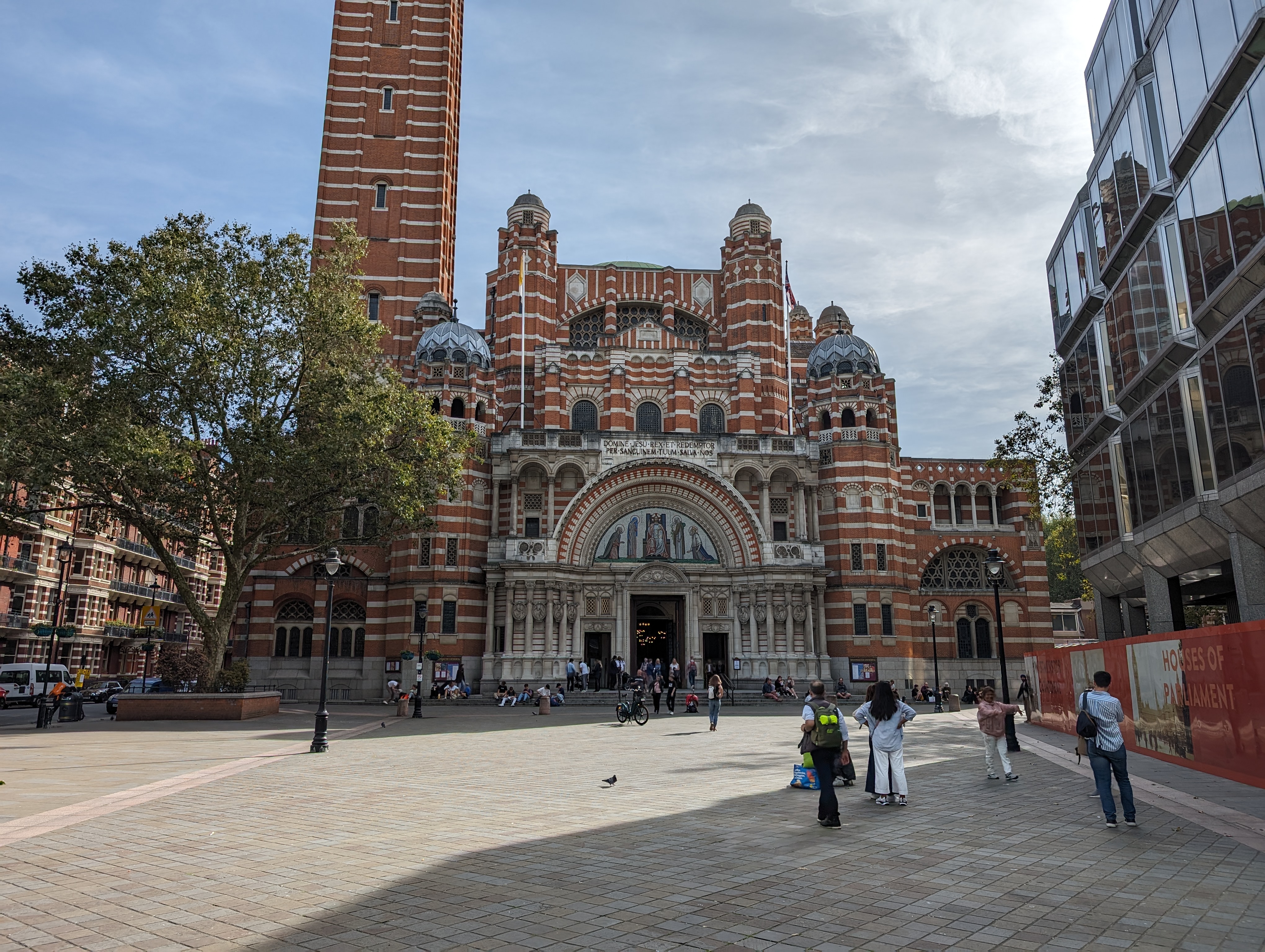



Ultra-wide

Main camera

2x zoom

8x zoom

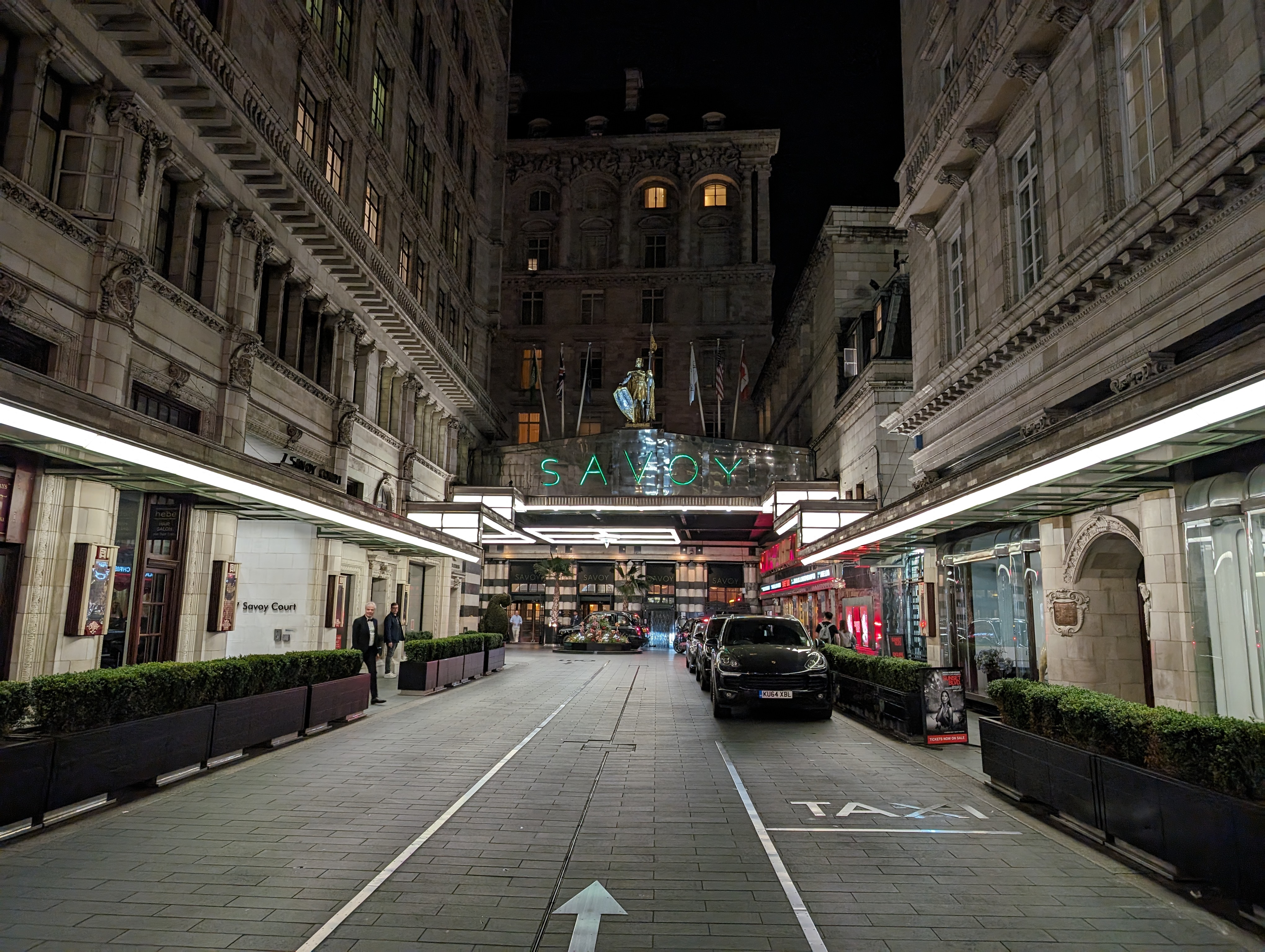
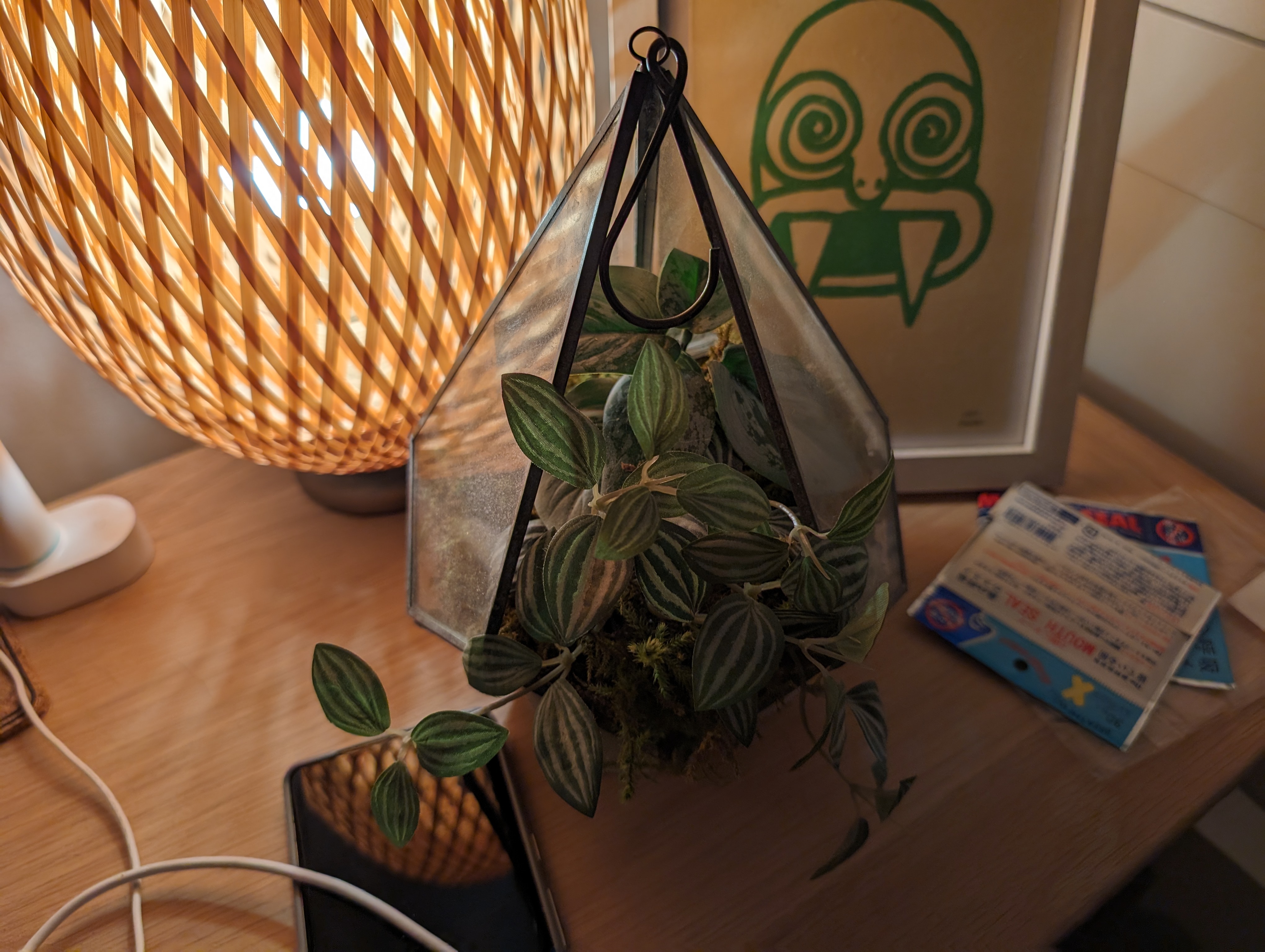

Portrait mode on main camera

Front camera

Portrait mode on front camera
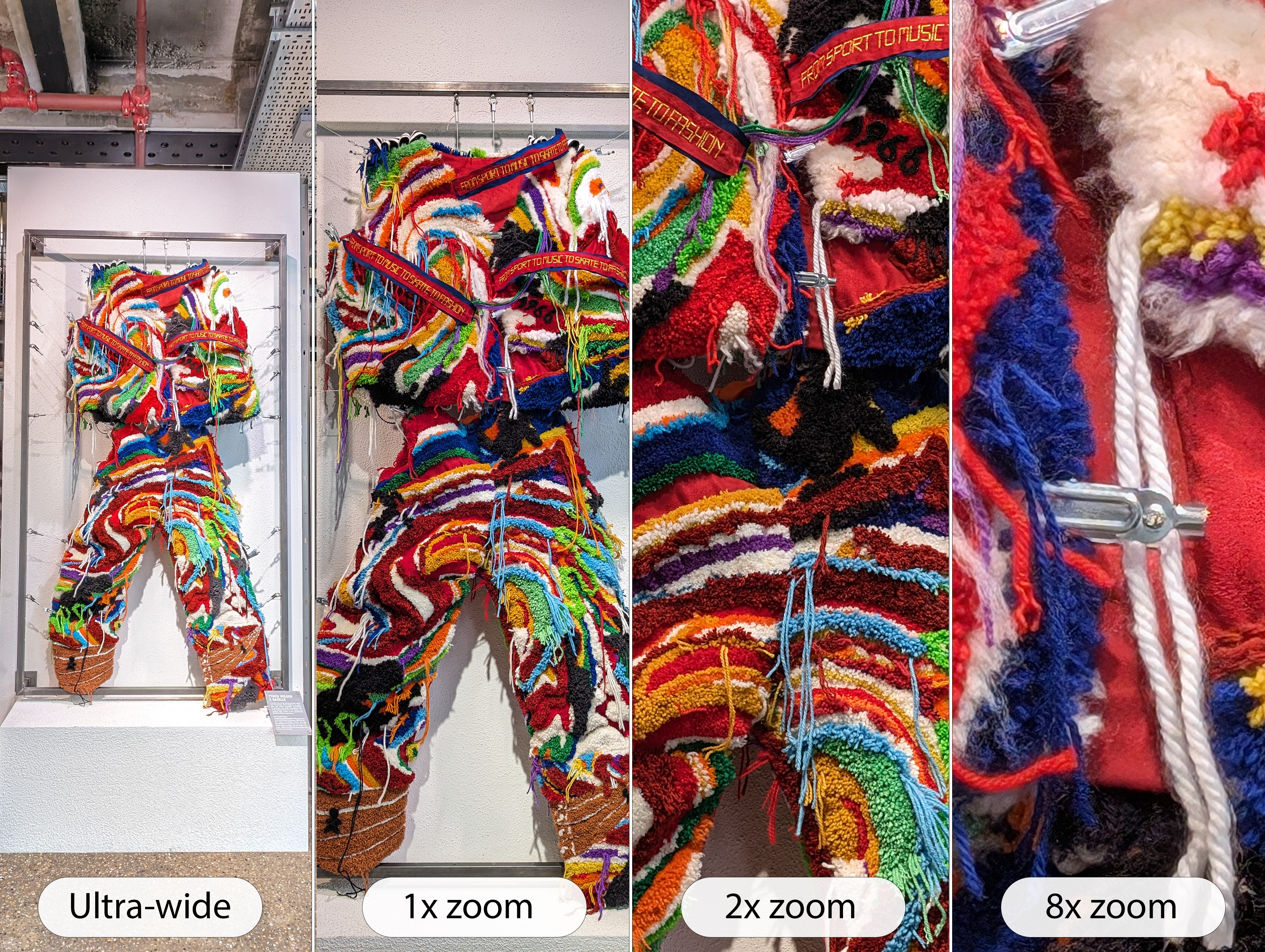
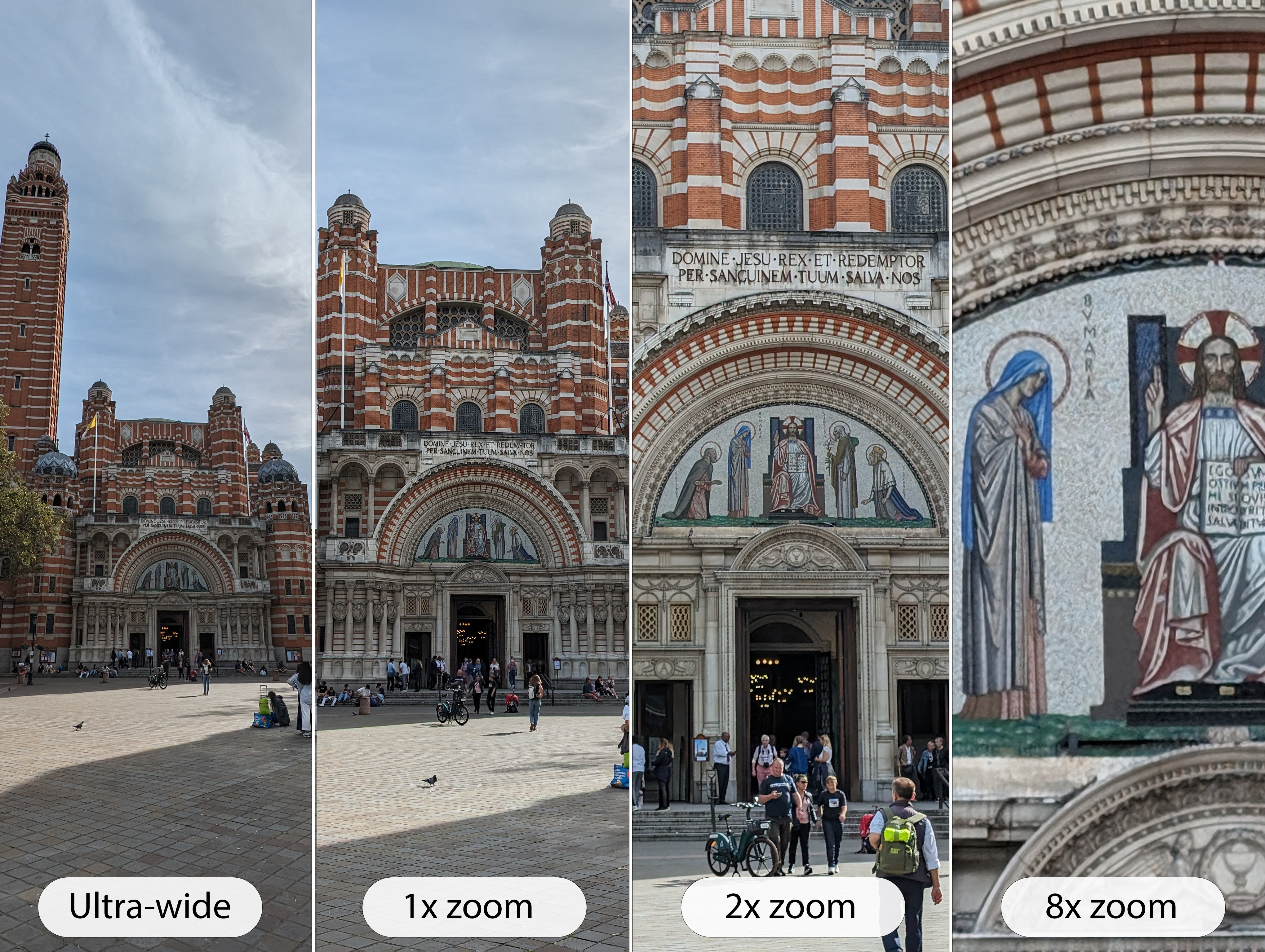
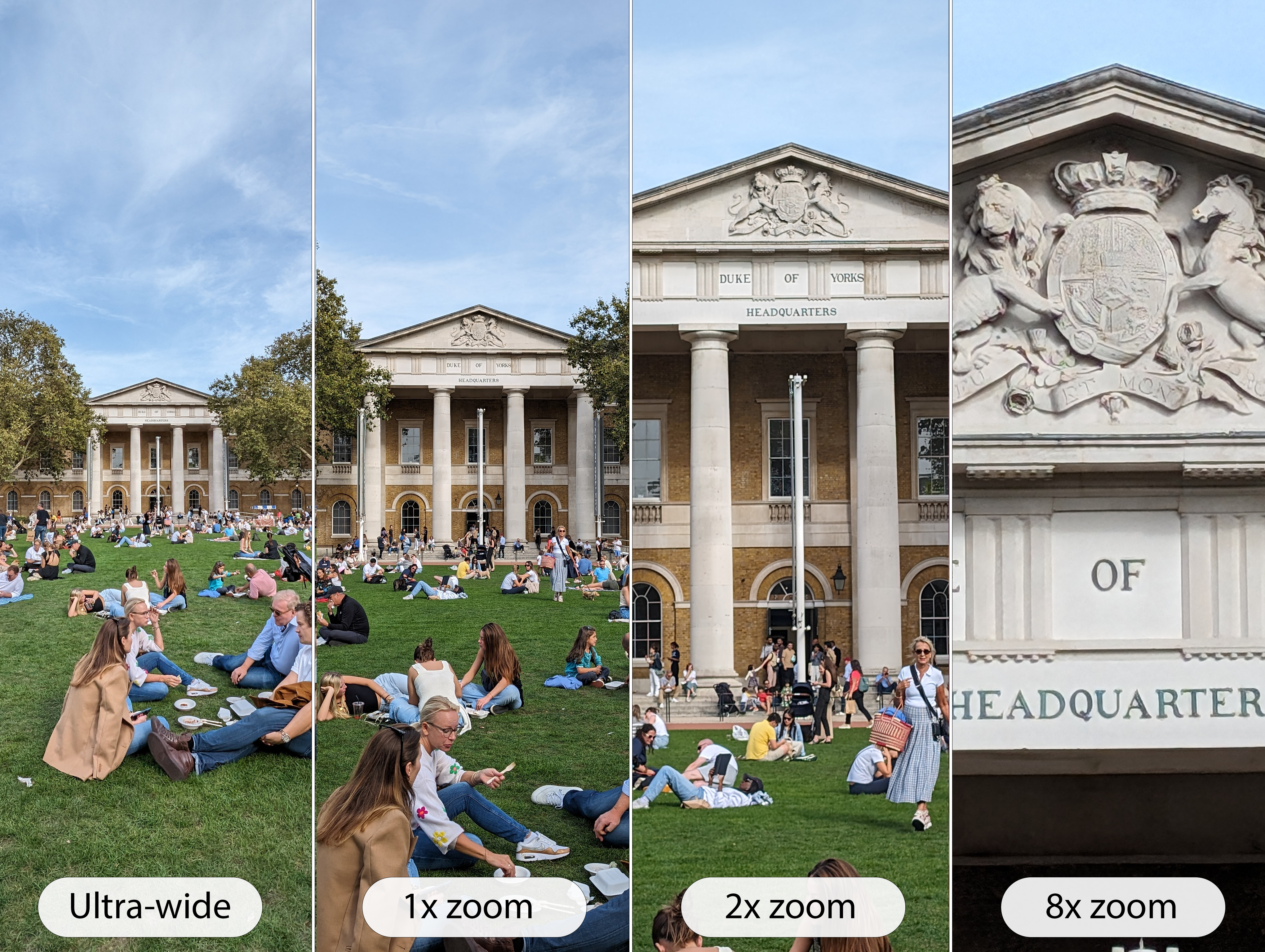

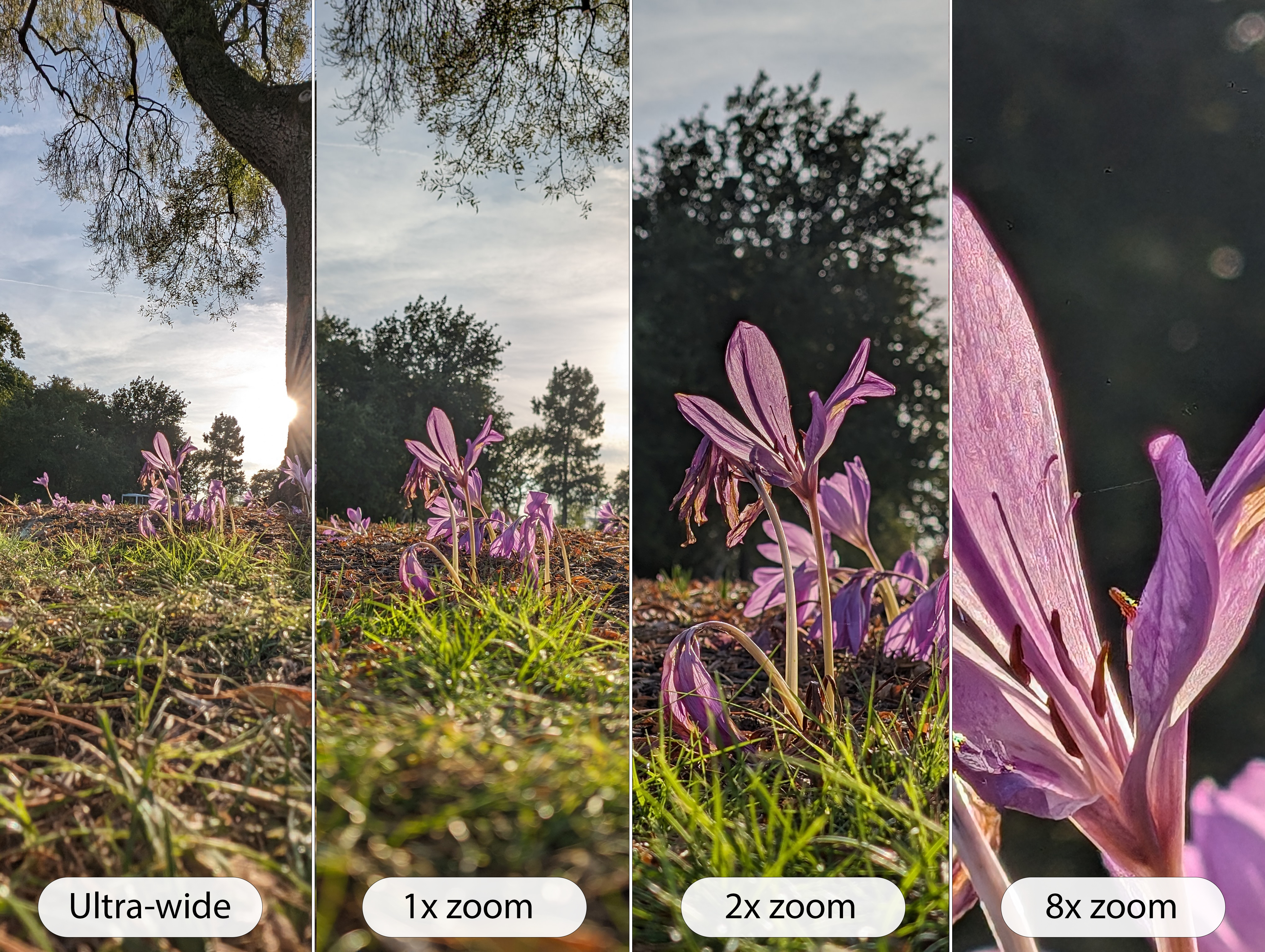
More generally, shots taken with the Pixel 8 are more vivid and tend to deliver more HDR-led shots with a boarder gamut of colors, while the iPhone 15 Pro captures more natural-looking scenes letting shadows and highlights remain in place. Both phones are excellent in low lighting scenarios, though we’d probably give the iPhone 15 Pro the slight edge here.






Macro mode automatically engages when you're close enough to your subject, but you have the option to switch it off as desired.

Even if select rivals can capture more in even darker scenes, the results of the 15 Pro are some of the most pleasing to look at.

Color, contrast and detail aren't quite as full-proof as you'd hoped in artificial lighting, even if shots in such conditions remain pleasing to the eye, overall.


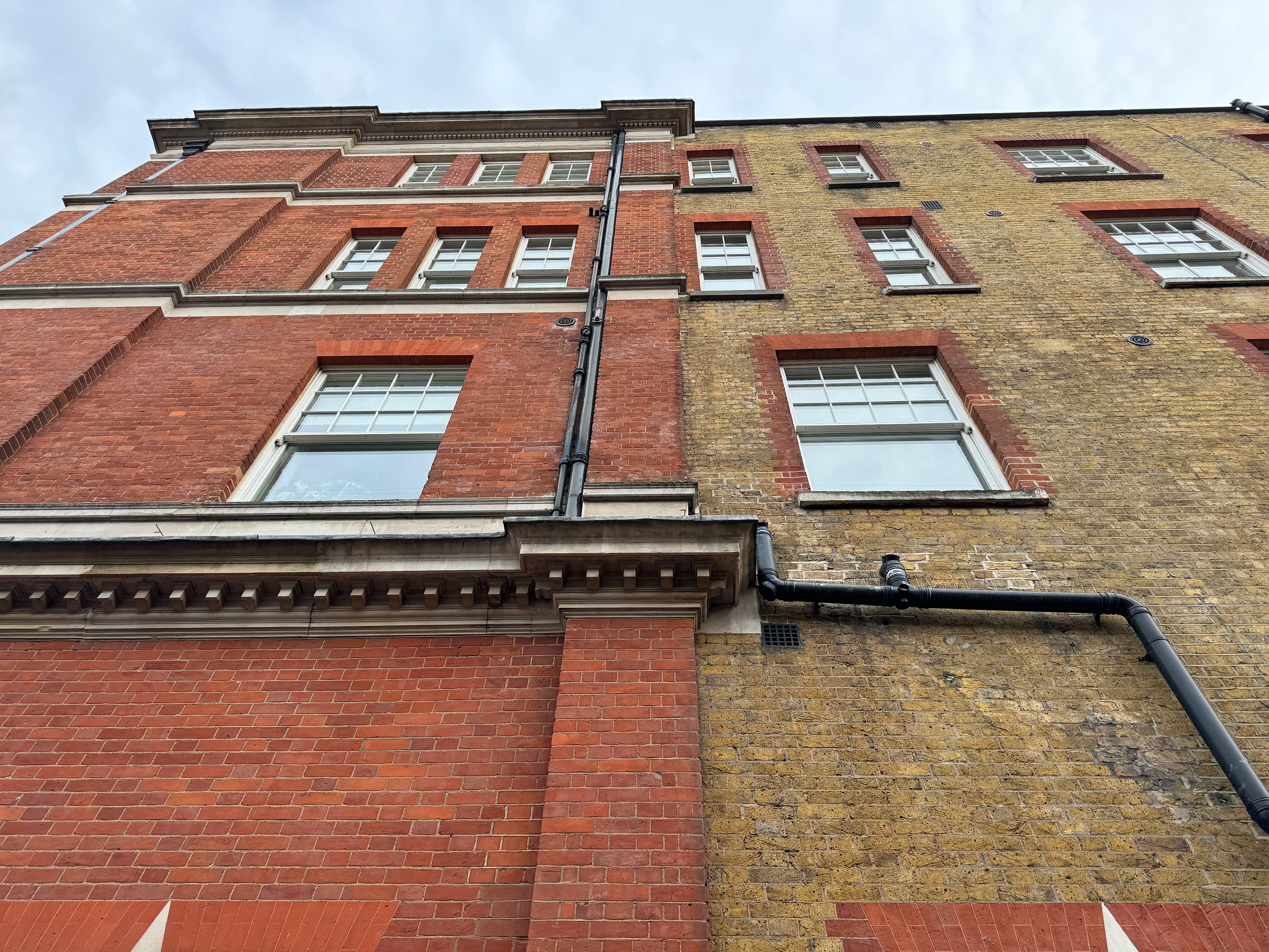
The iPhone 15 Pro has a great handle on dynamic range.

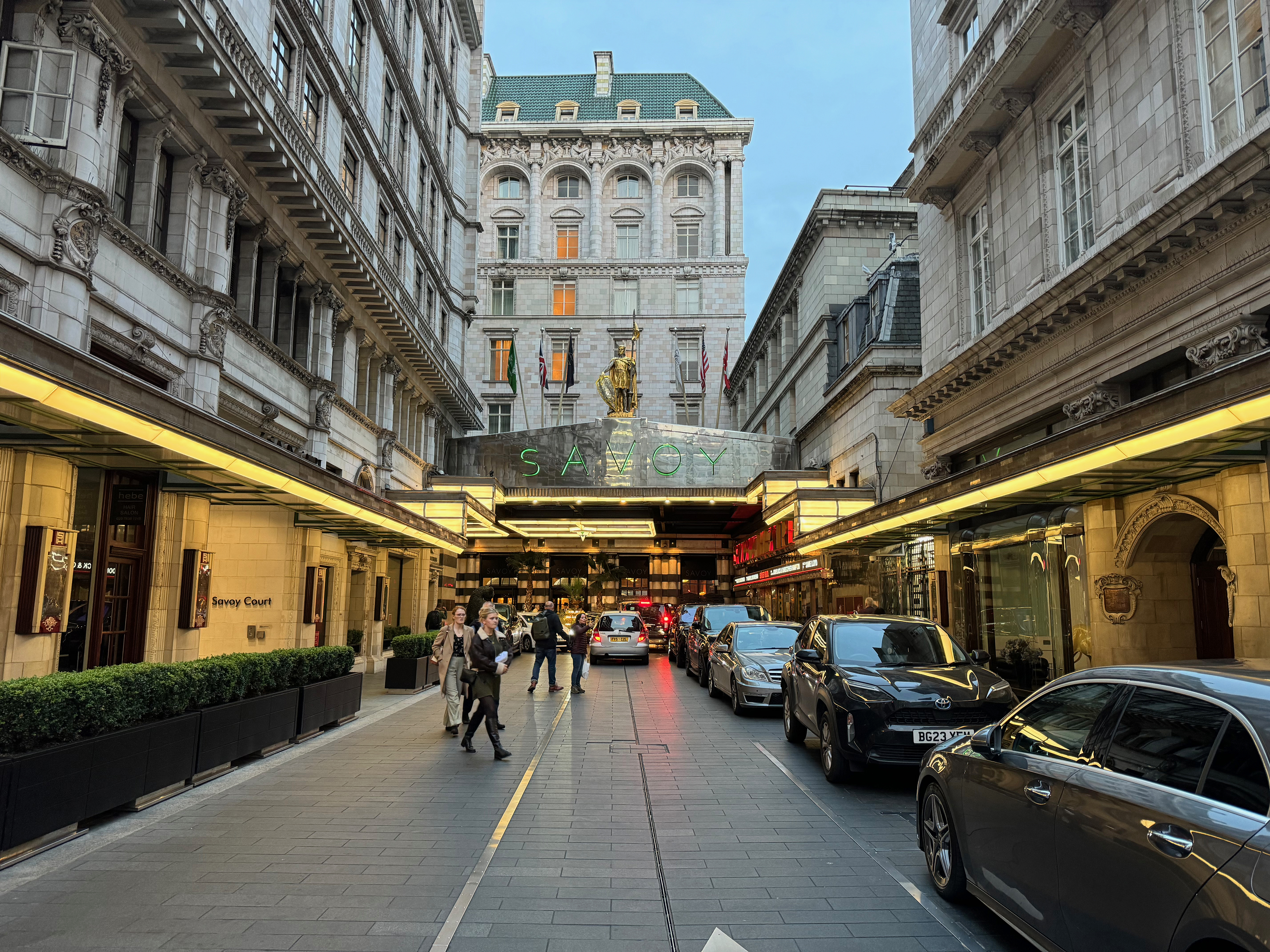
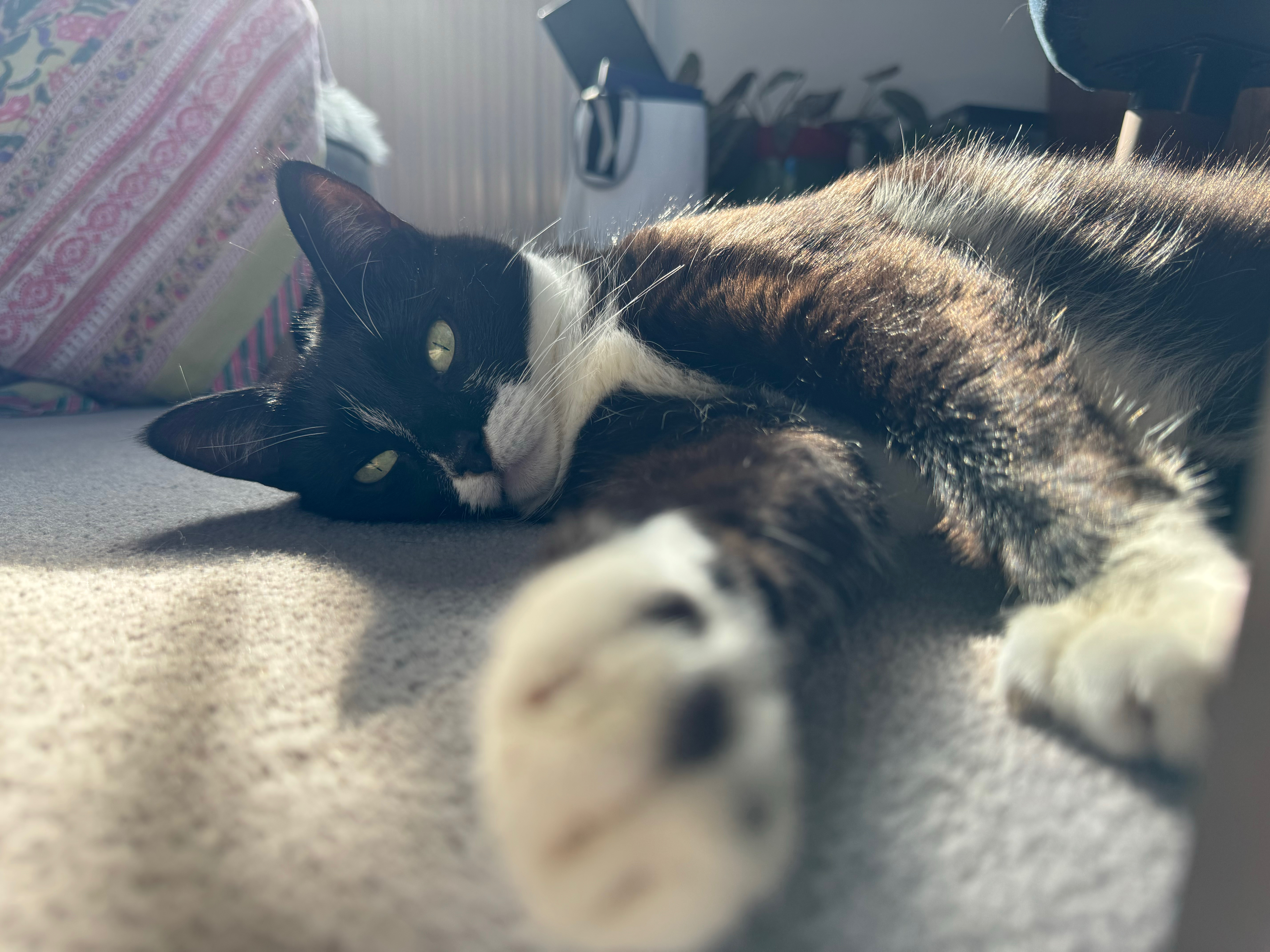
This shot didn't need the phone's new adjustable portrait mode functionality, as the lens's natural focal length came into play.

Portrait mode on the main 24mm lens.

Strong natural backlighting against dimmer, warmer artificial foreground lighting doesn't show the front-facing camera off in the best light.
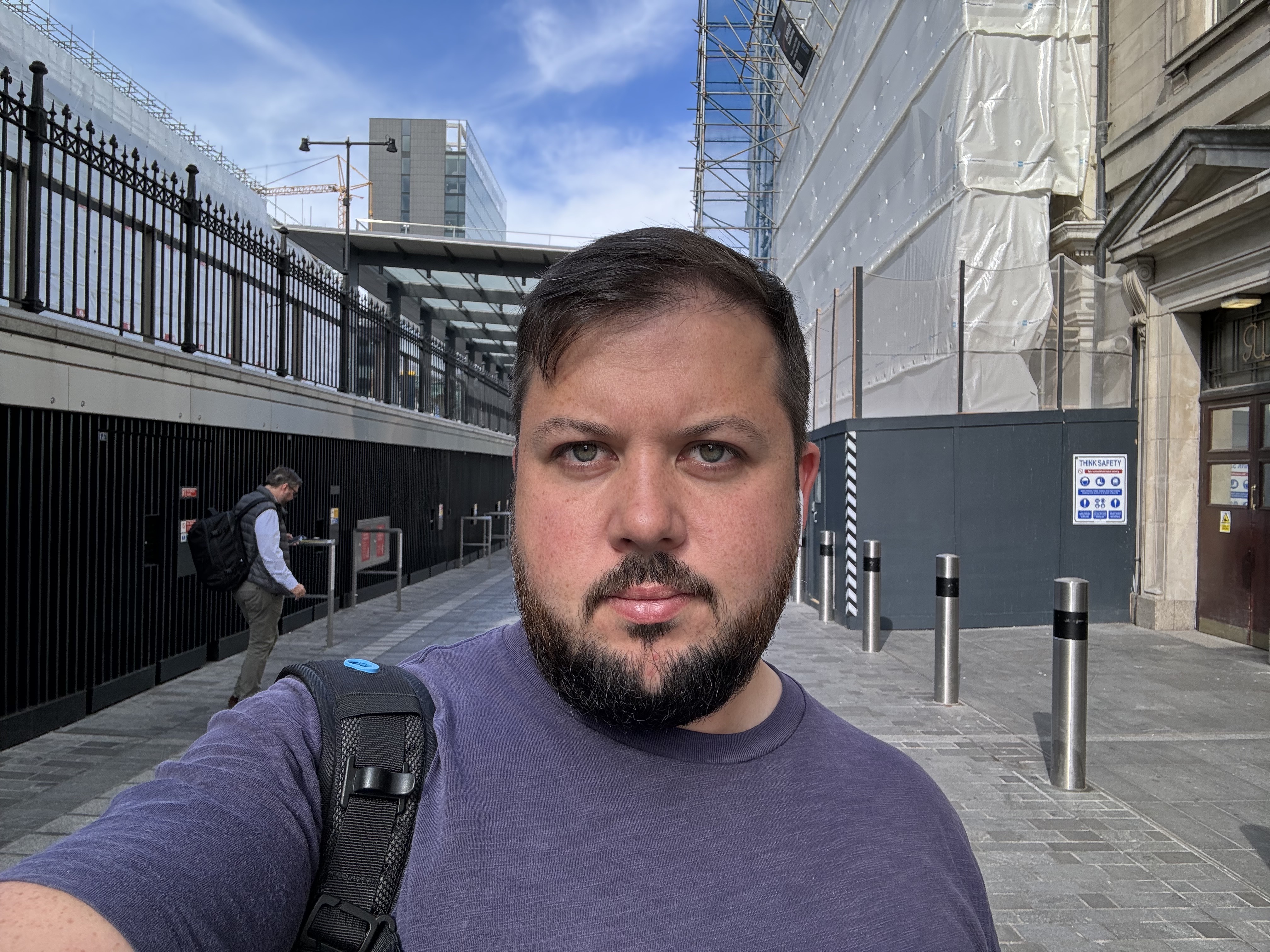
Snapping a selfie in natural light without portrait mode engaged.

Snapping a selfie in natural light with portrait mode engaged.
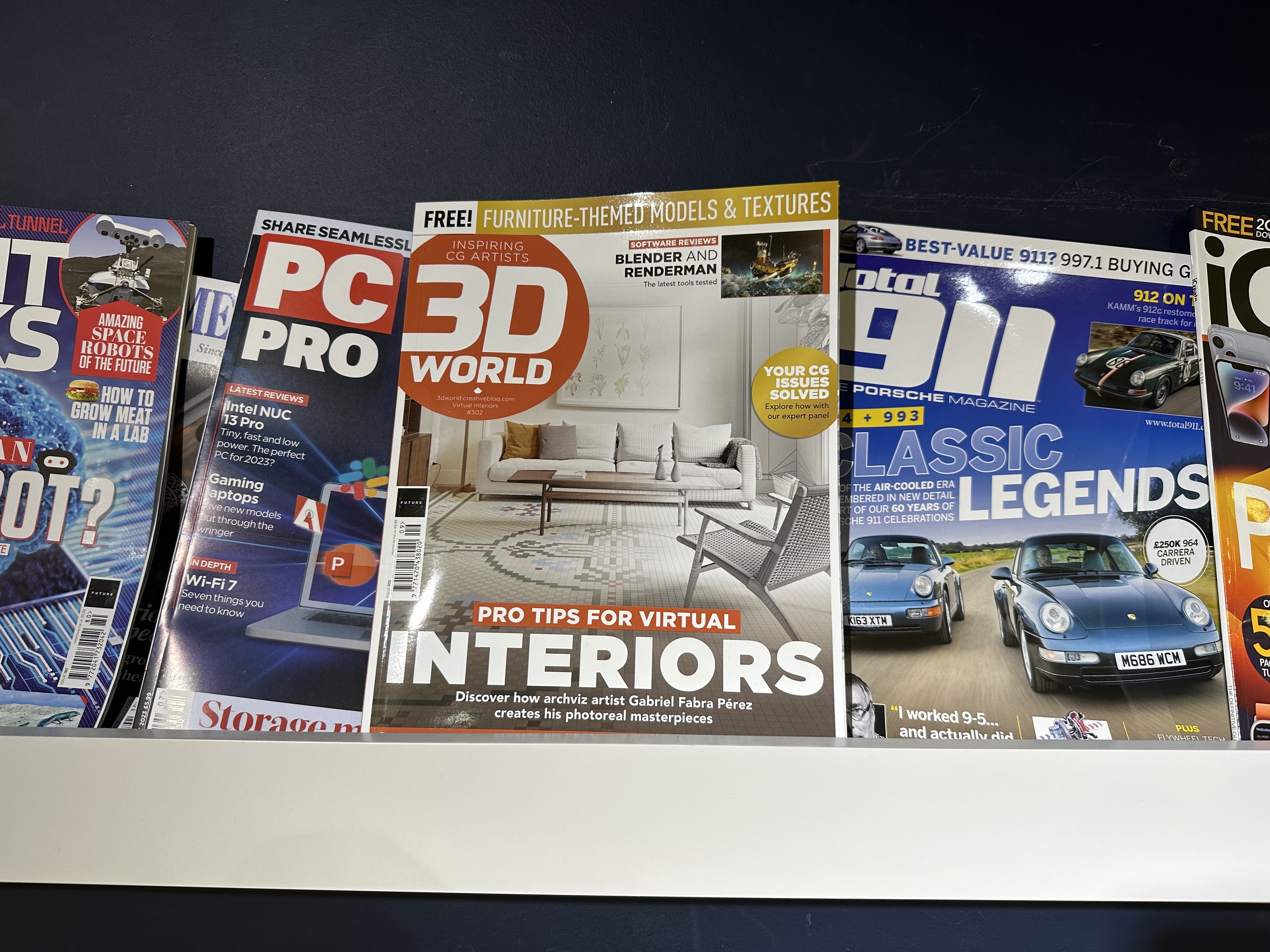

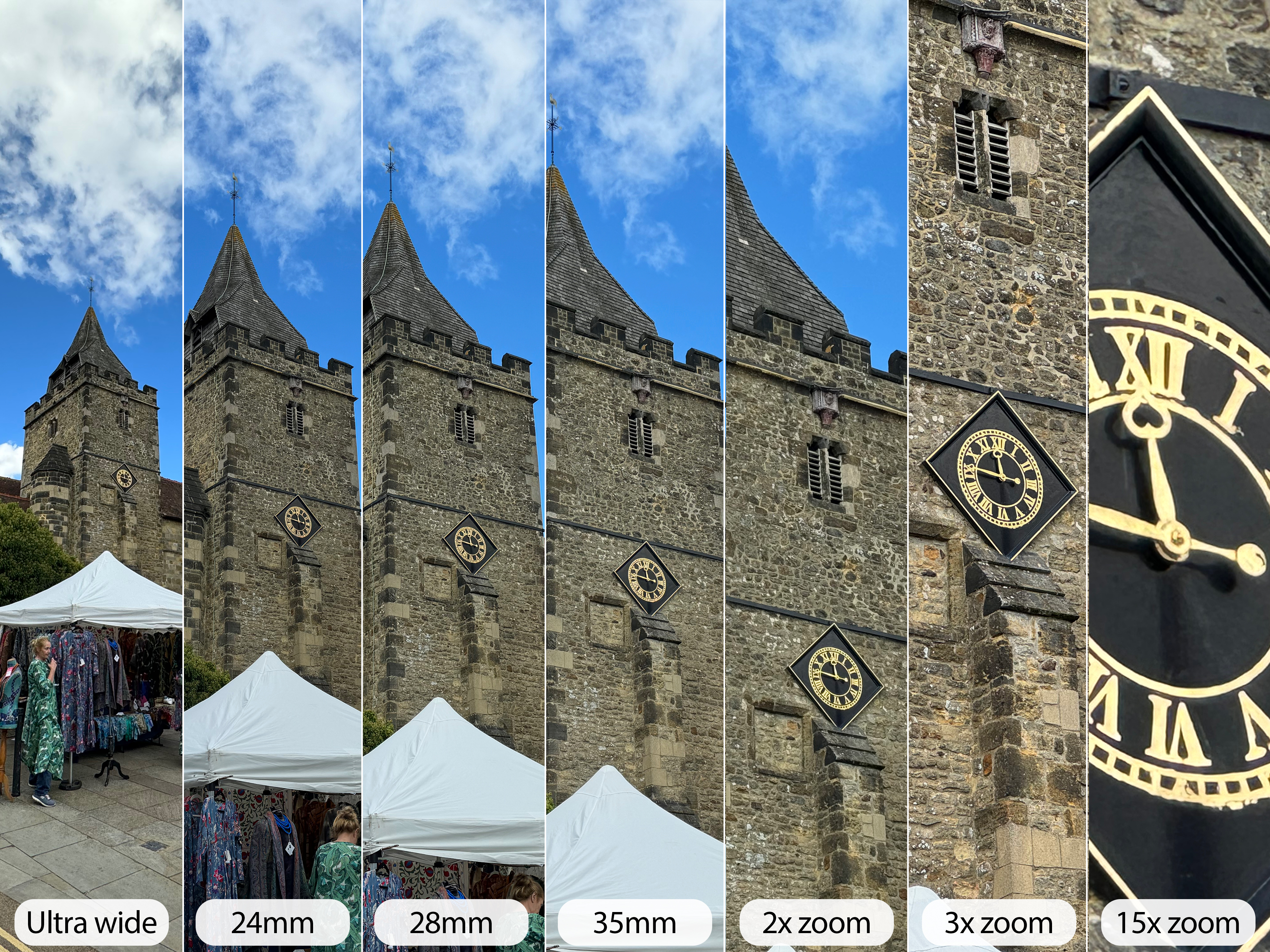
Examples of the iPhone 15 Pro's zoom range, through to its 15x digital maximum, in natural light.
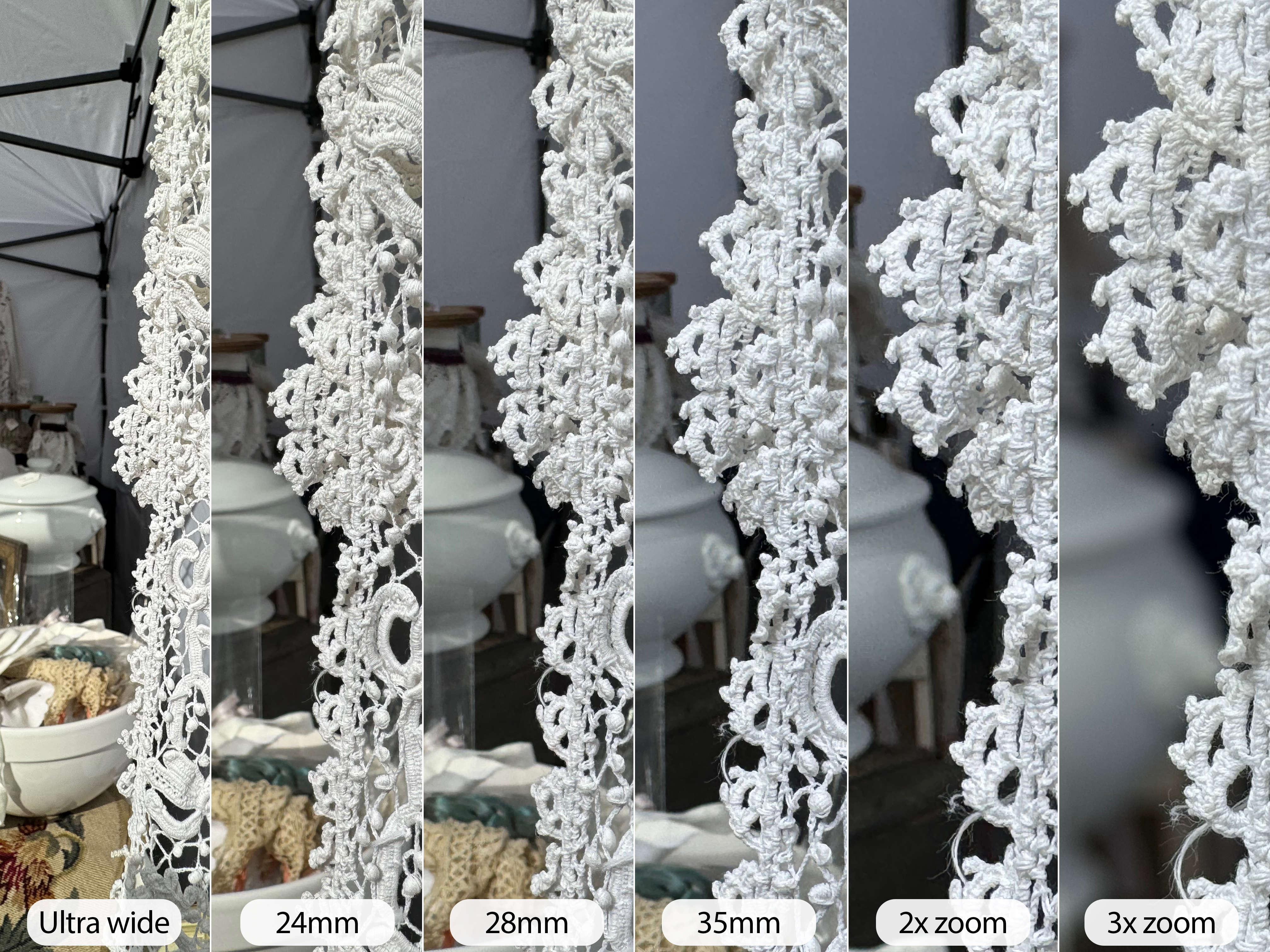
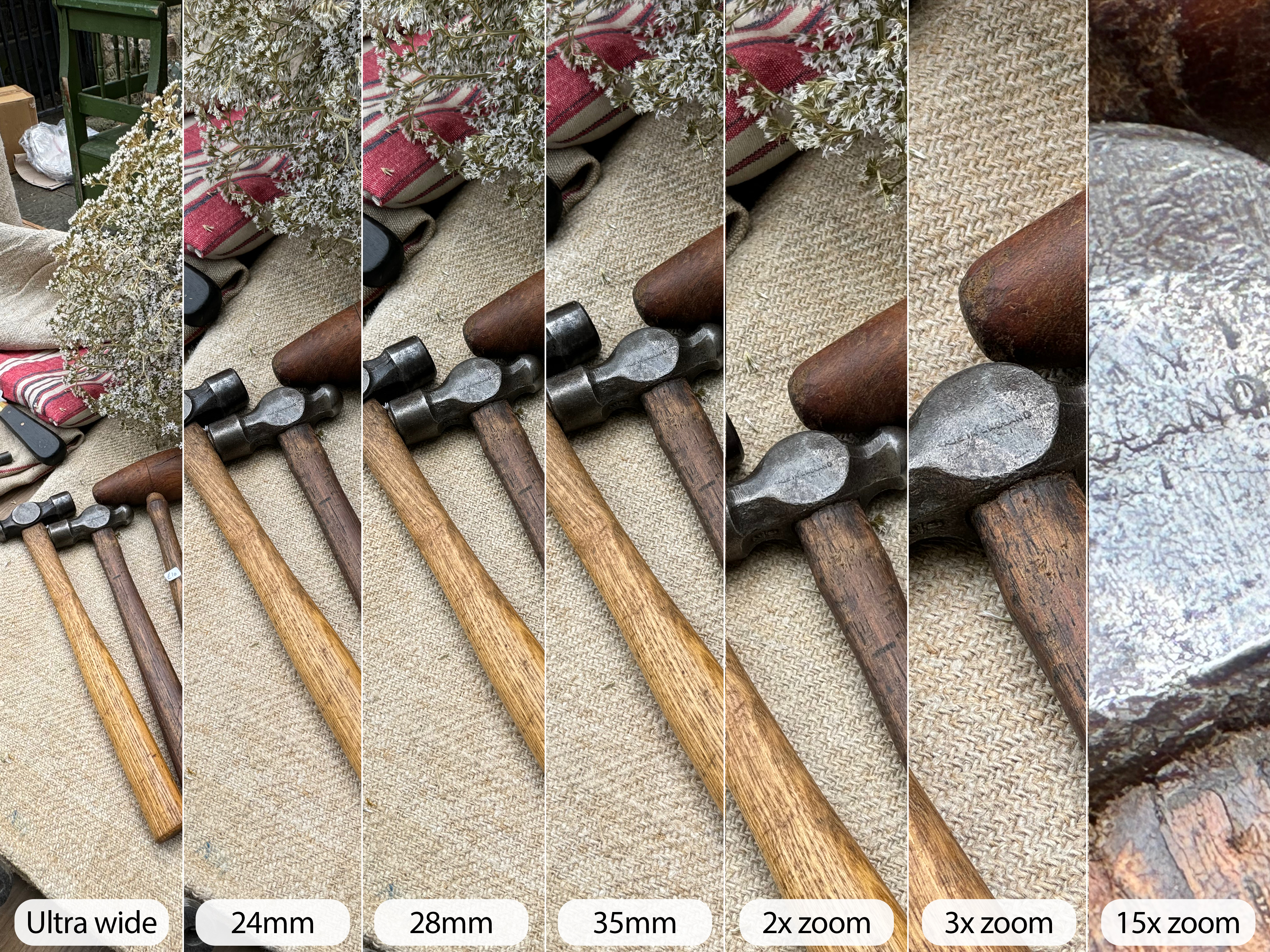
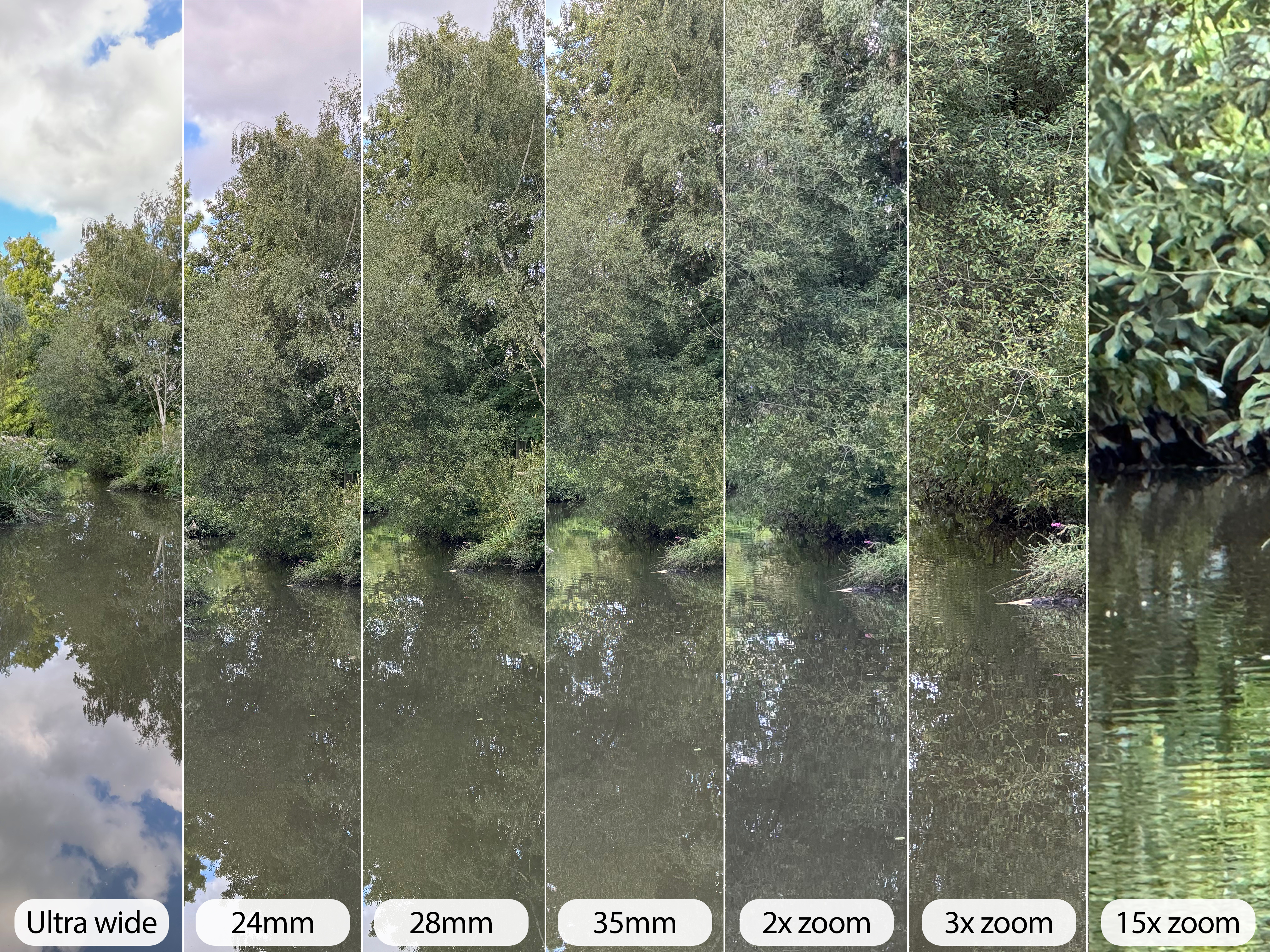
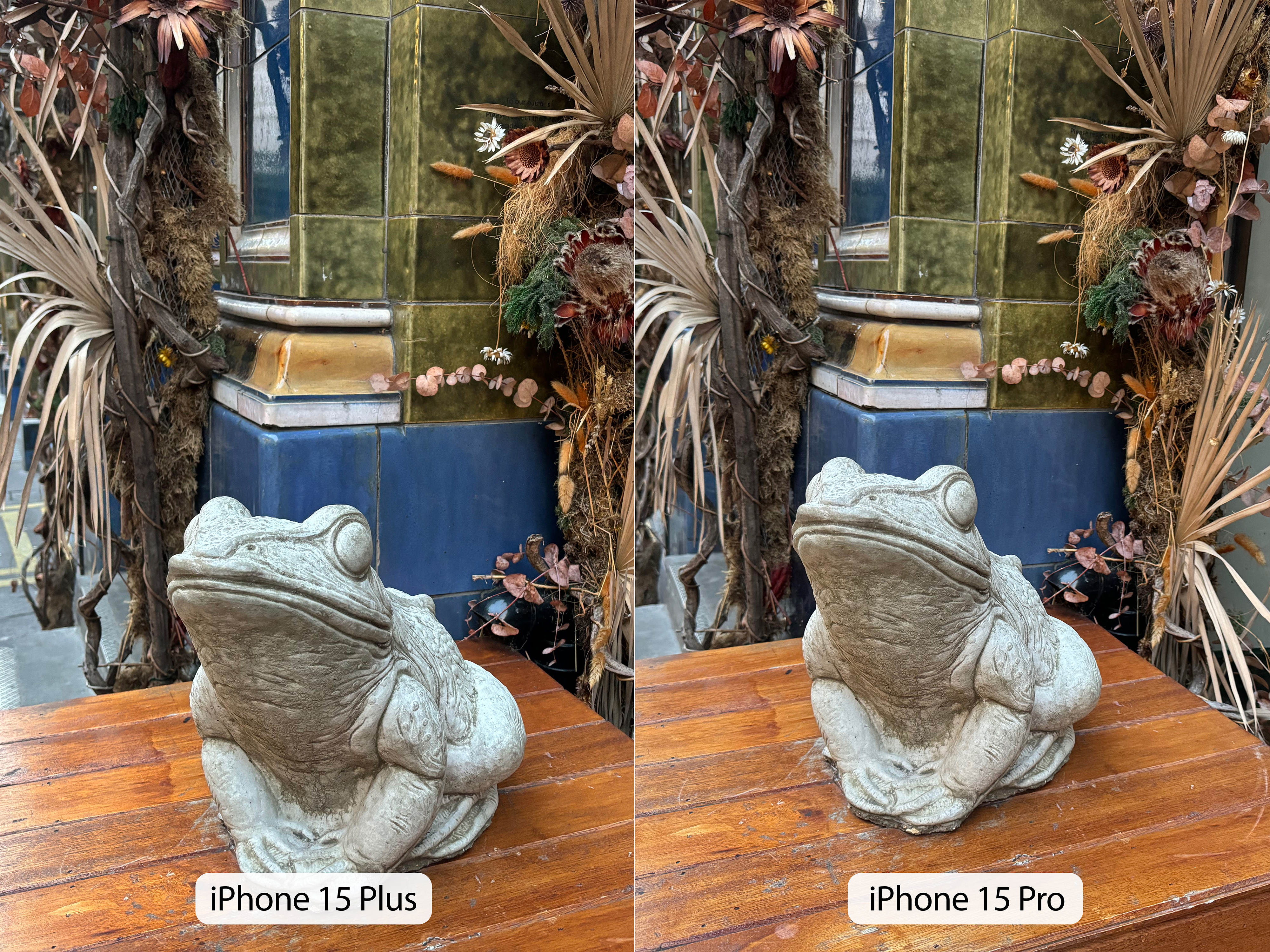
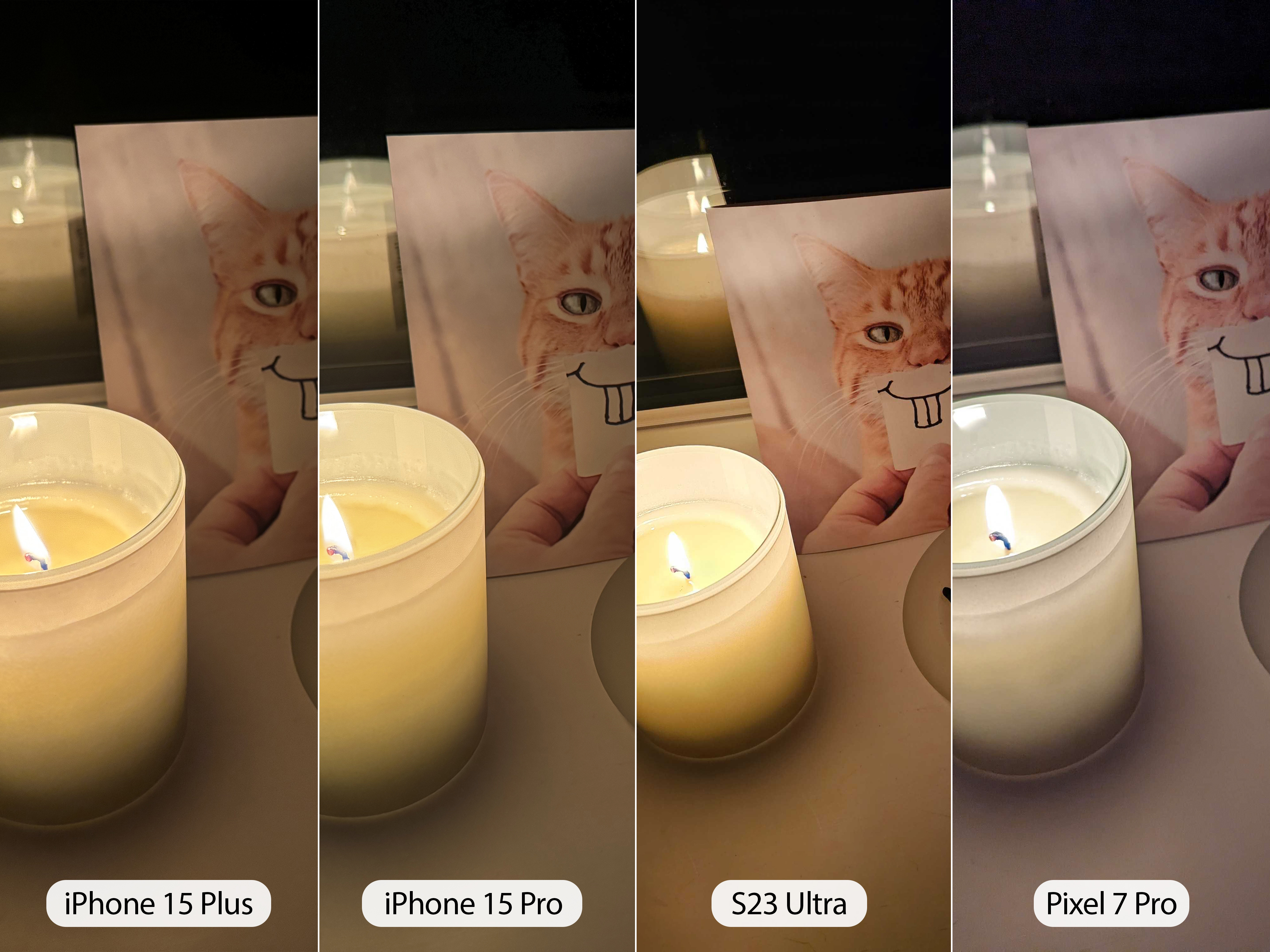
Reiterating my point from earlier, the iPhone 15 Plus and Pro used in this comparison offer the best exposure and detail on the candle, whereas the S23 Ultra boasts greater contrast at the expense of dynamic range, while the Pixel 7 Pro completely misjudges the color in the scene.
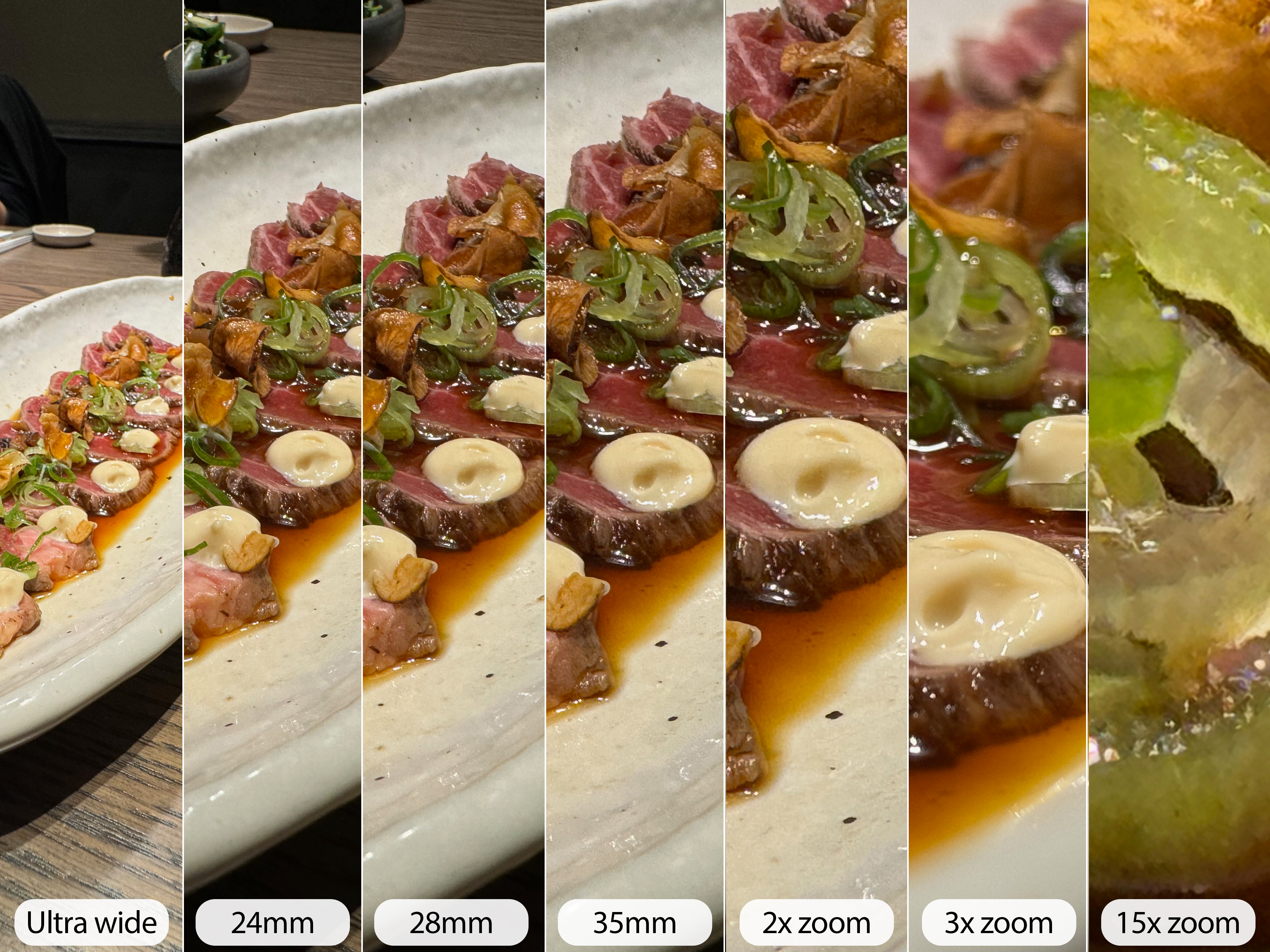
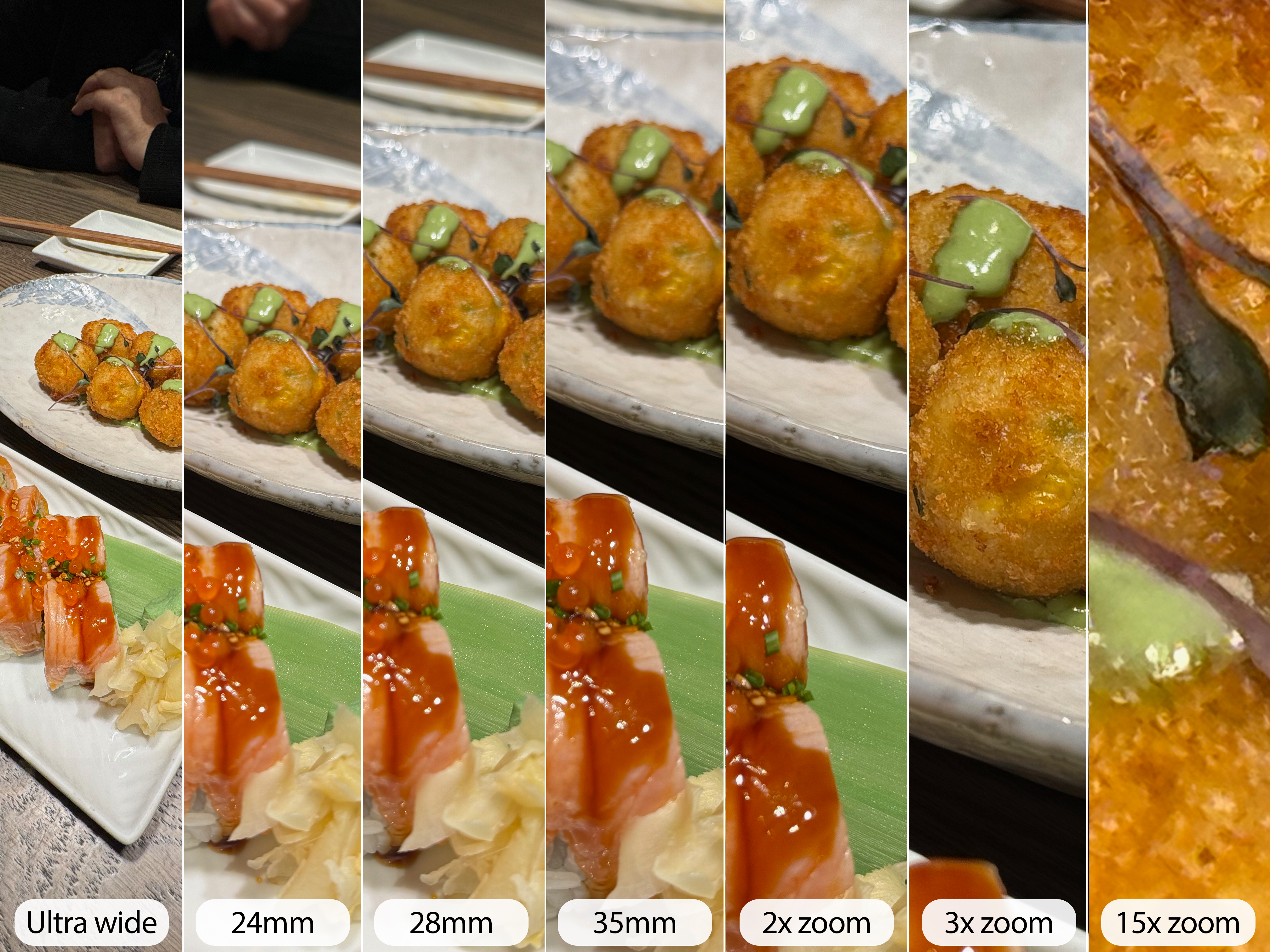
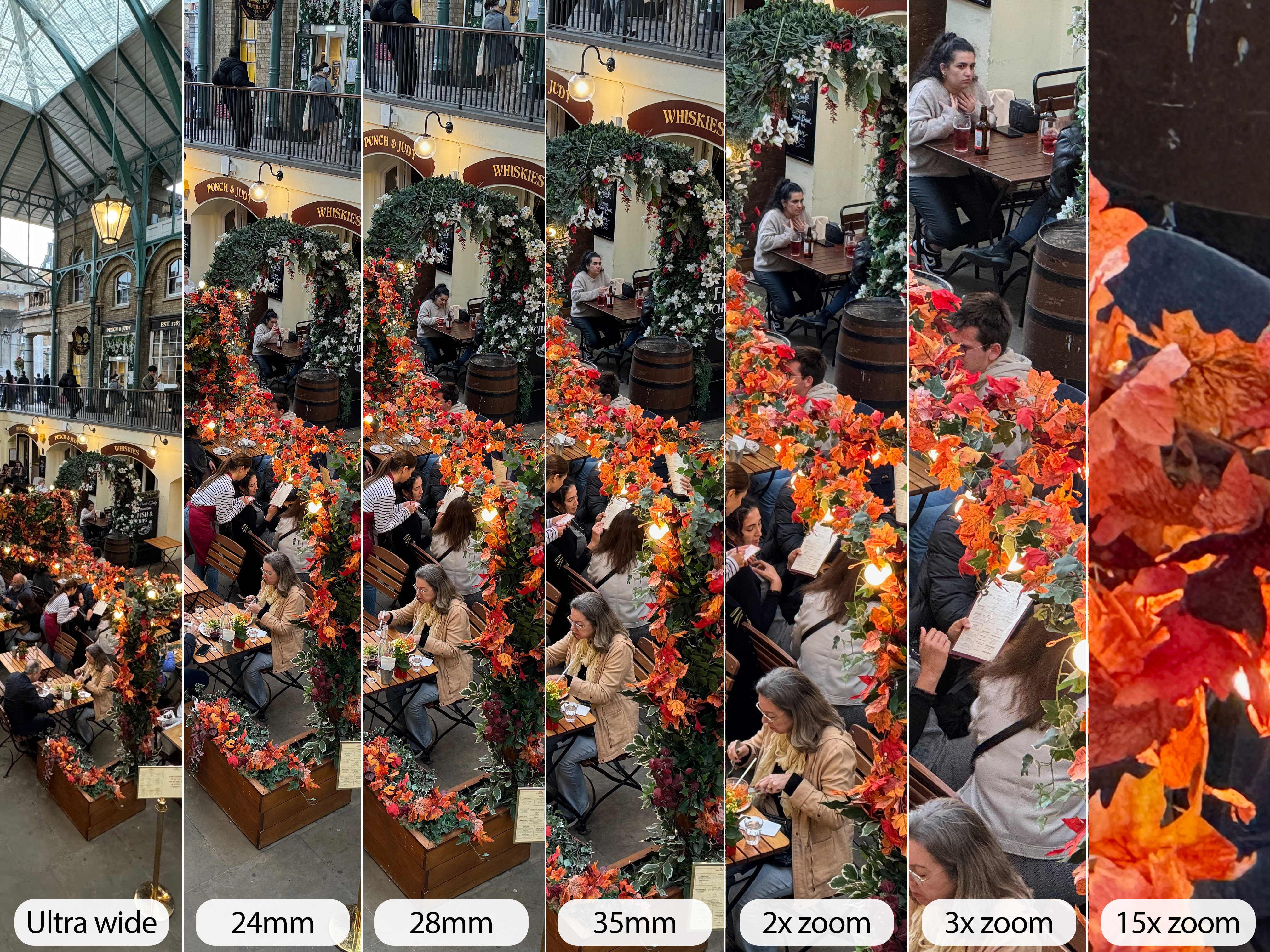
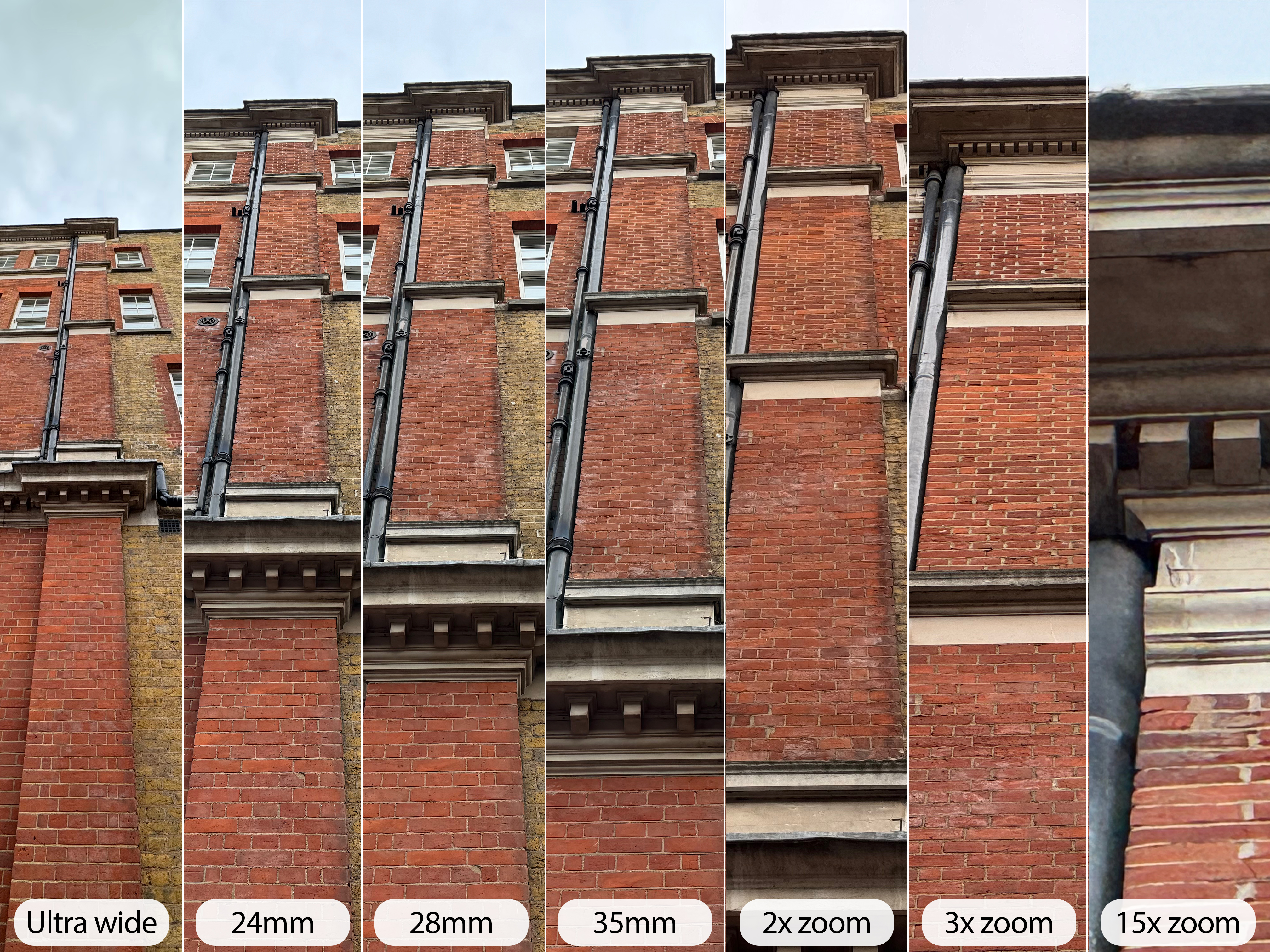
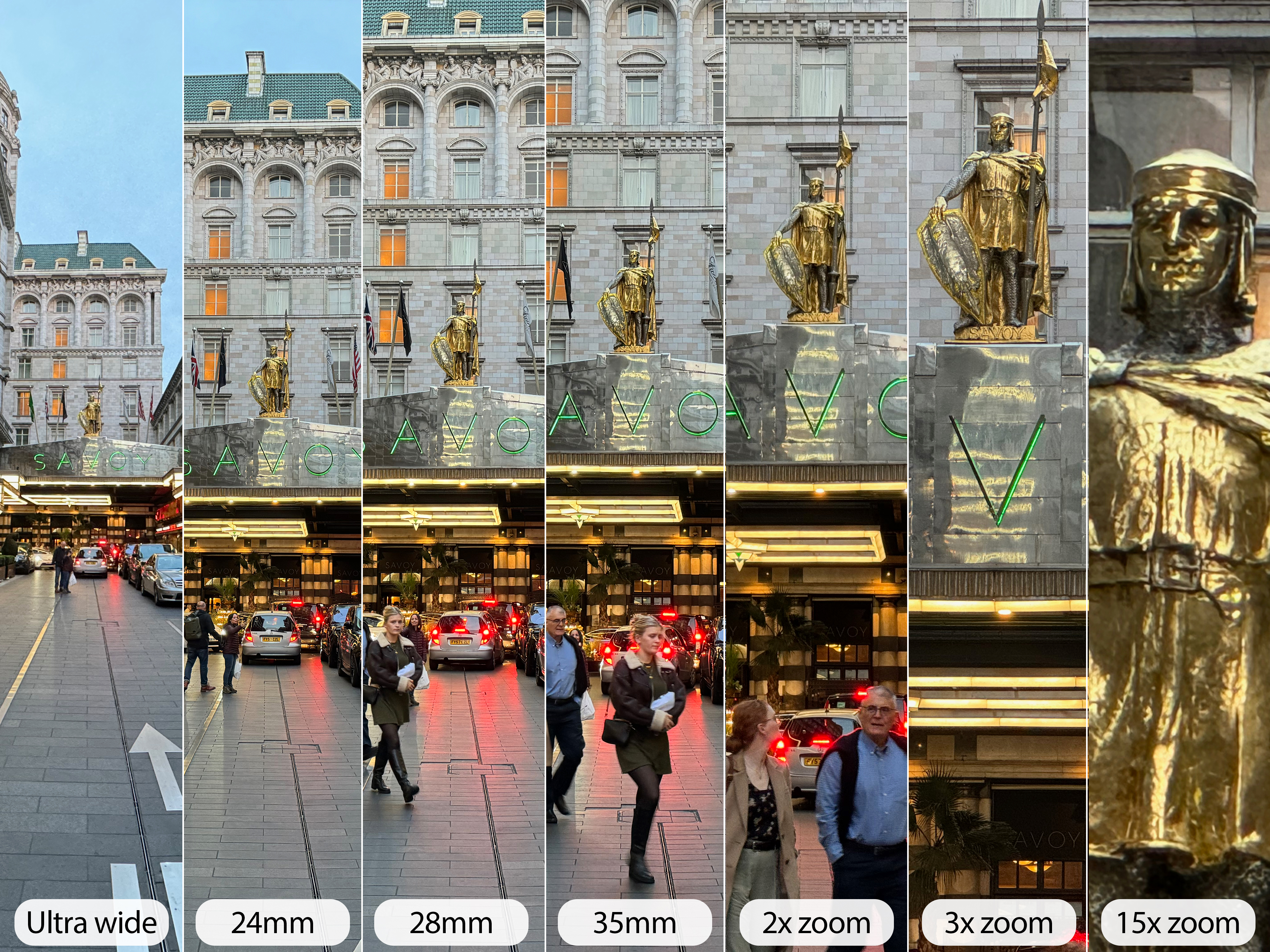
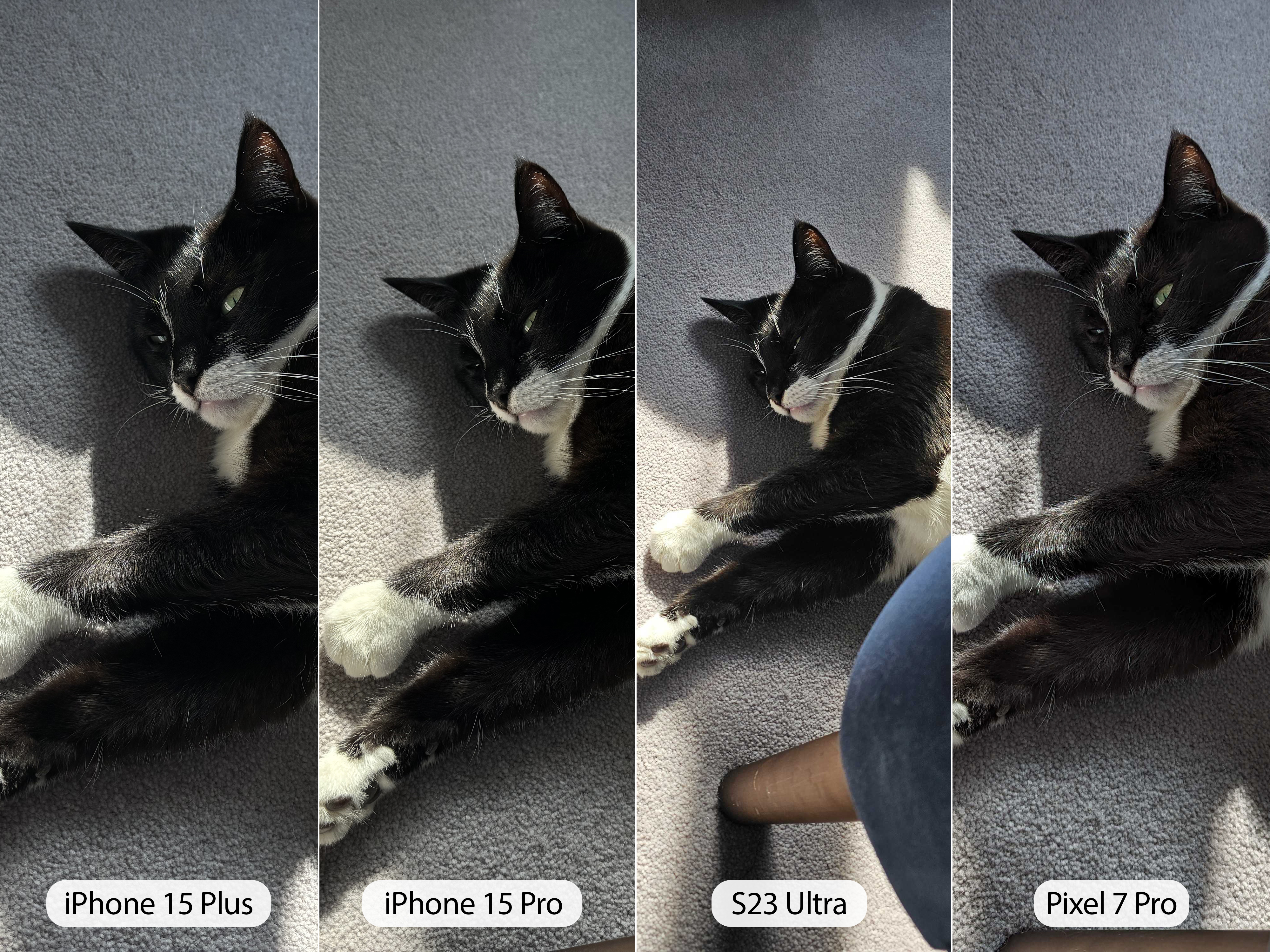
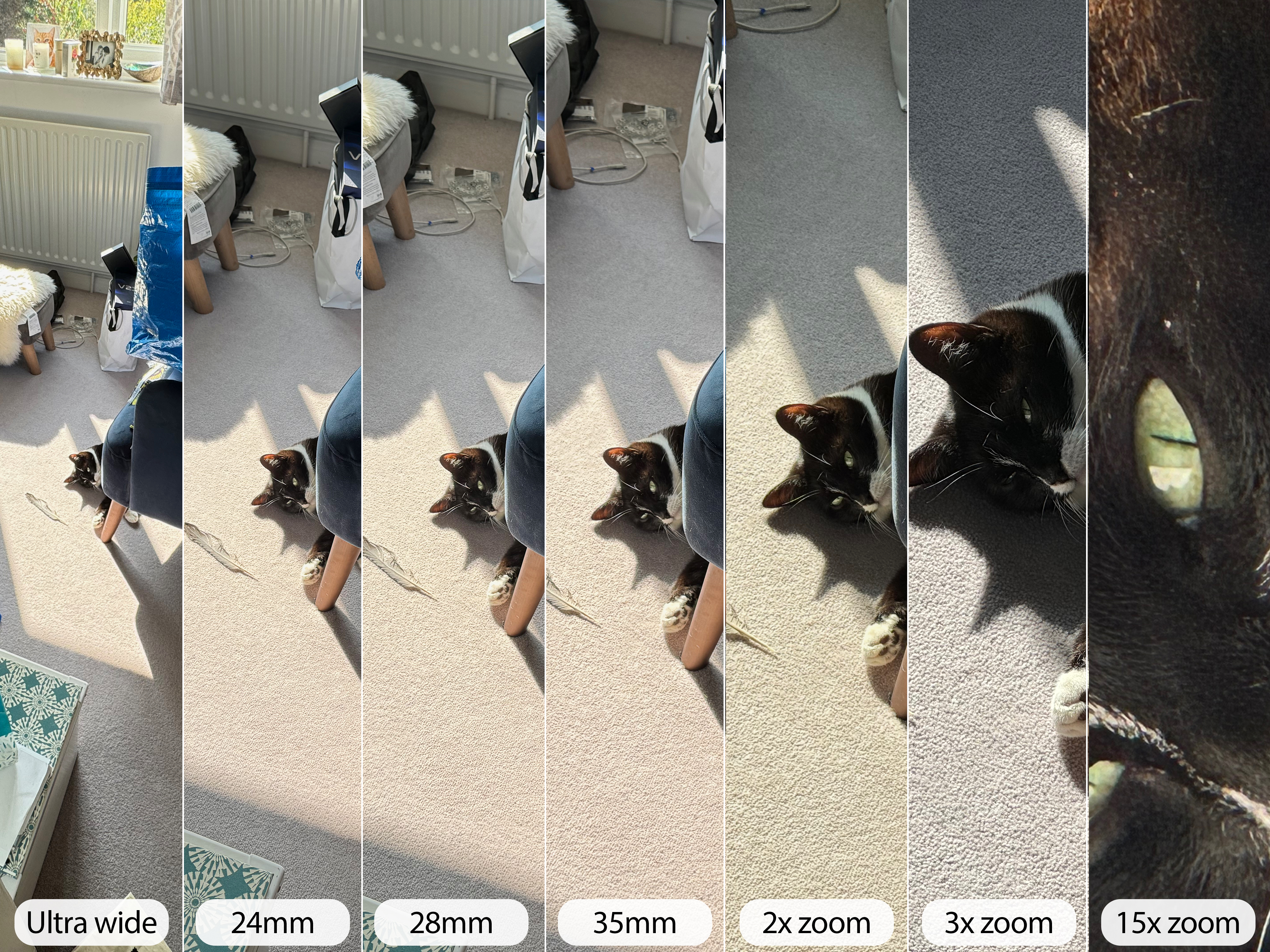
It looks as though the 15 Pro assesses color and light based on the whole frame, which can vary as you zoom in on a subject, resulting in the uncharacteristic color temperature change present at 2x and 3x zoom ranges.
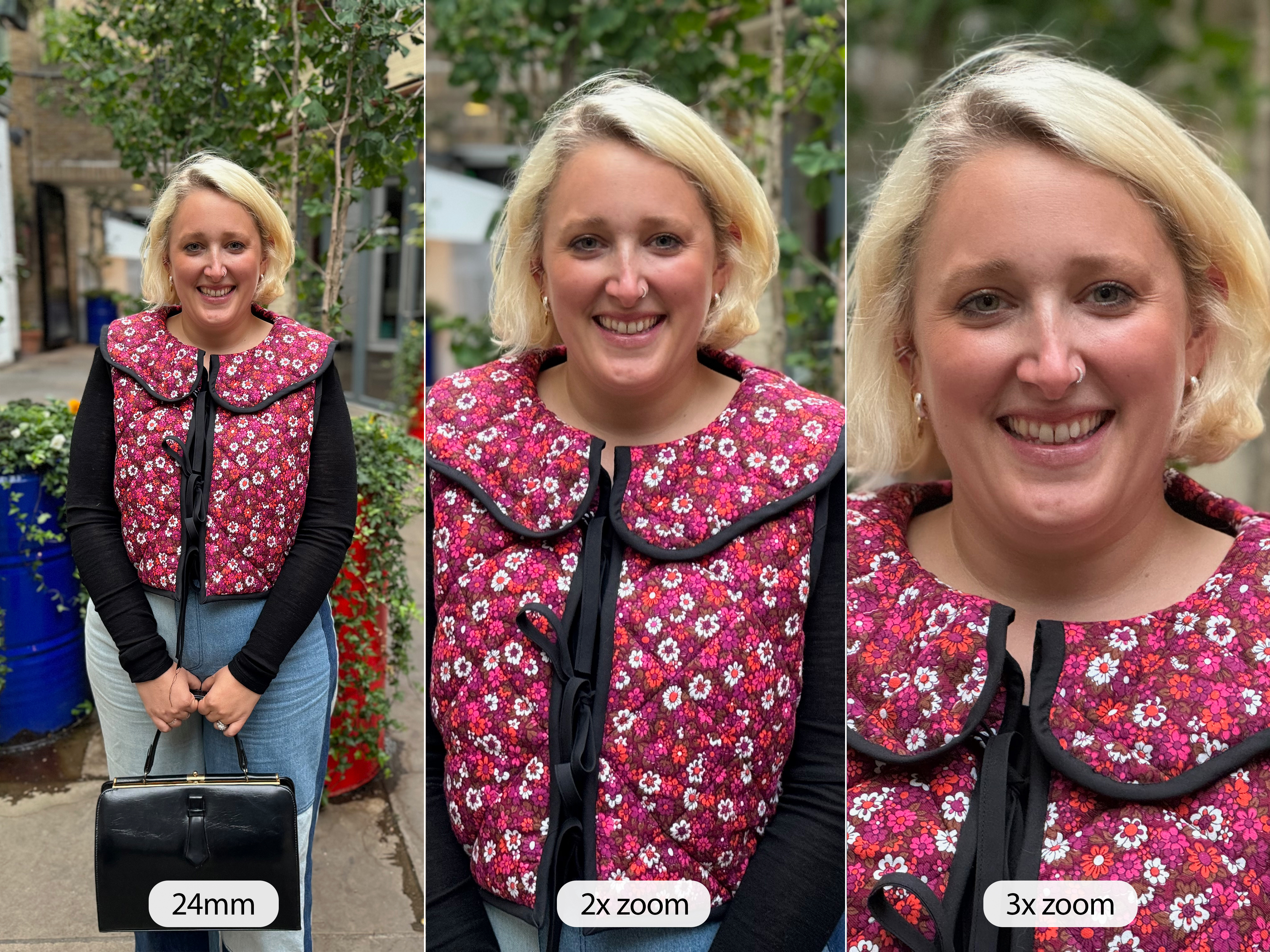
The degree of bokeh behind a subject when shooting in portrait can vary pretty significantly as you move through the phone's dedicated zoom telephoto distances.
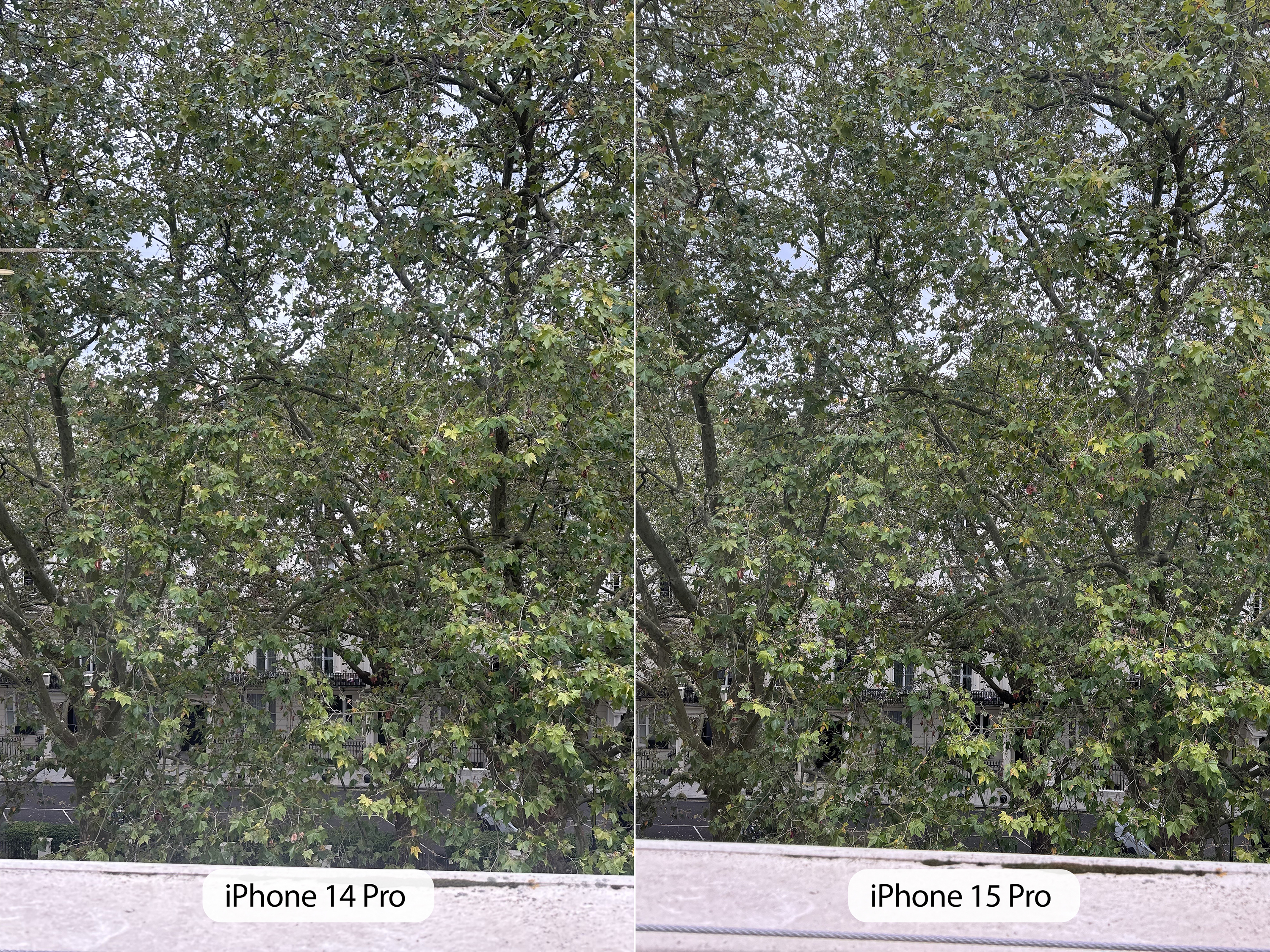
The 15 Pro's main camera unquestionably serves up more vibrant and contrasted images than its predecessor's.
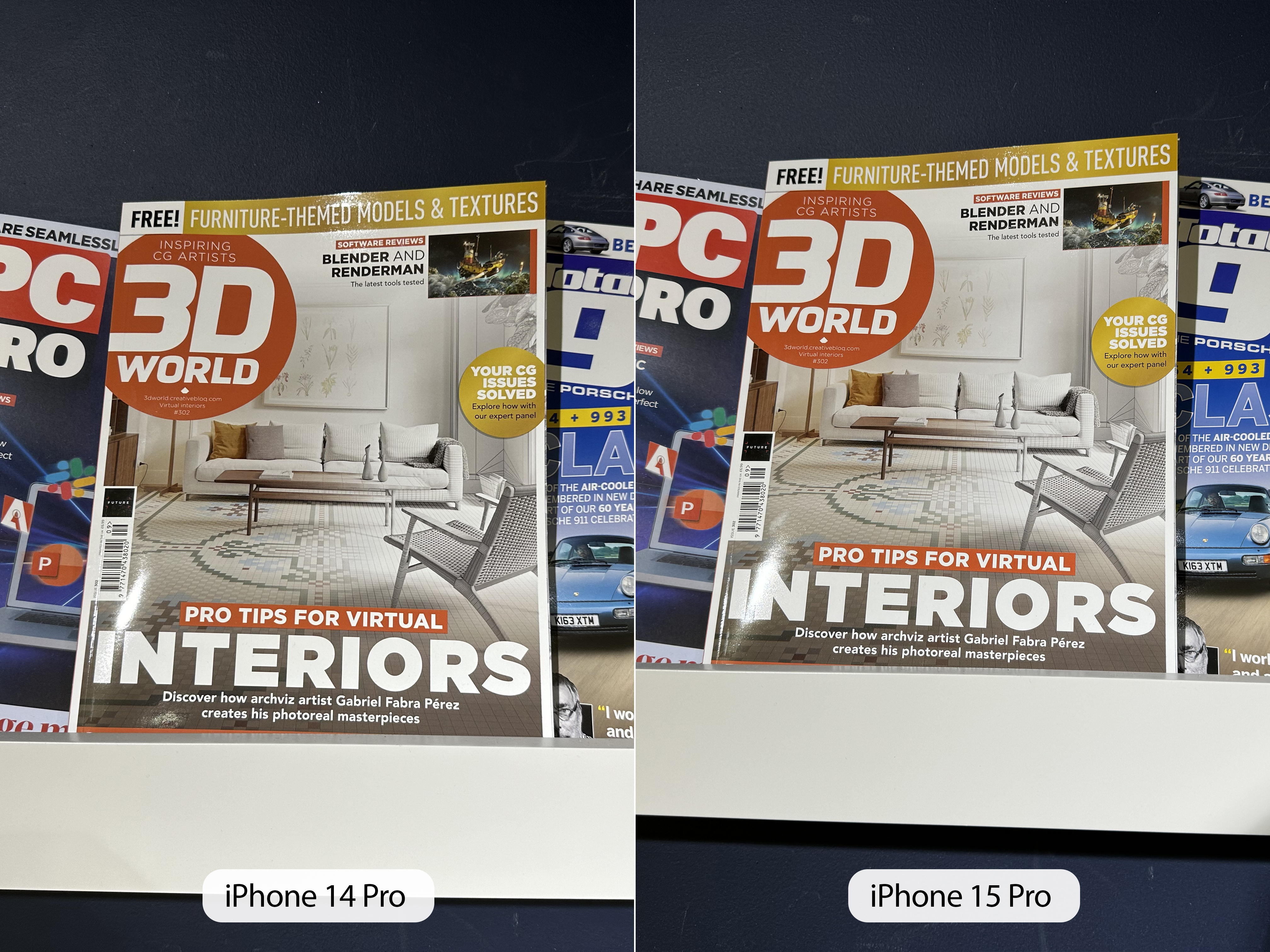
Indeed, taken with that dedicated telephoto camera, the iPhone 15 Pro has an overall camera advantage. Again, though, it’s debatable whether that edge will be worth $300 / £300 to most people, at least in isolation.
Google Pixel 8 vs iPhone 15 Pro: performance and software
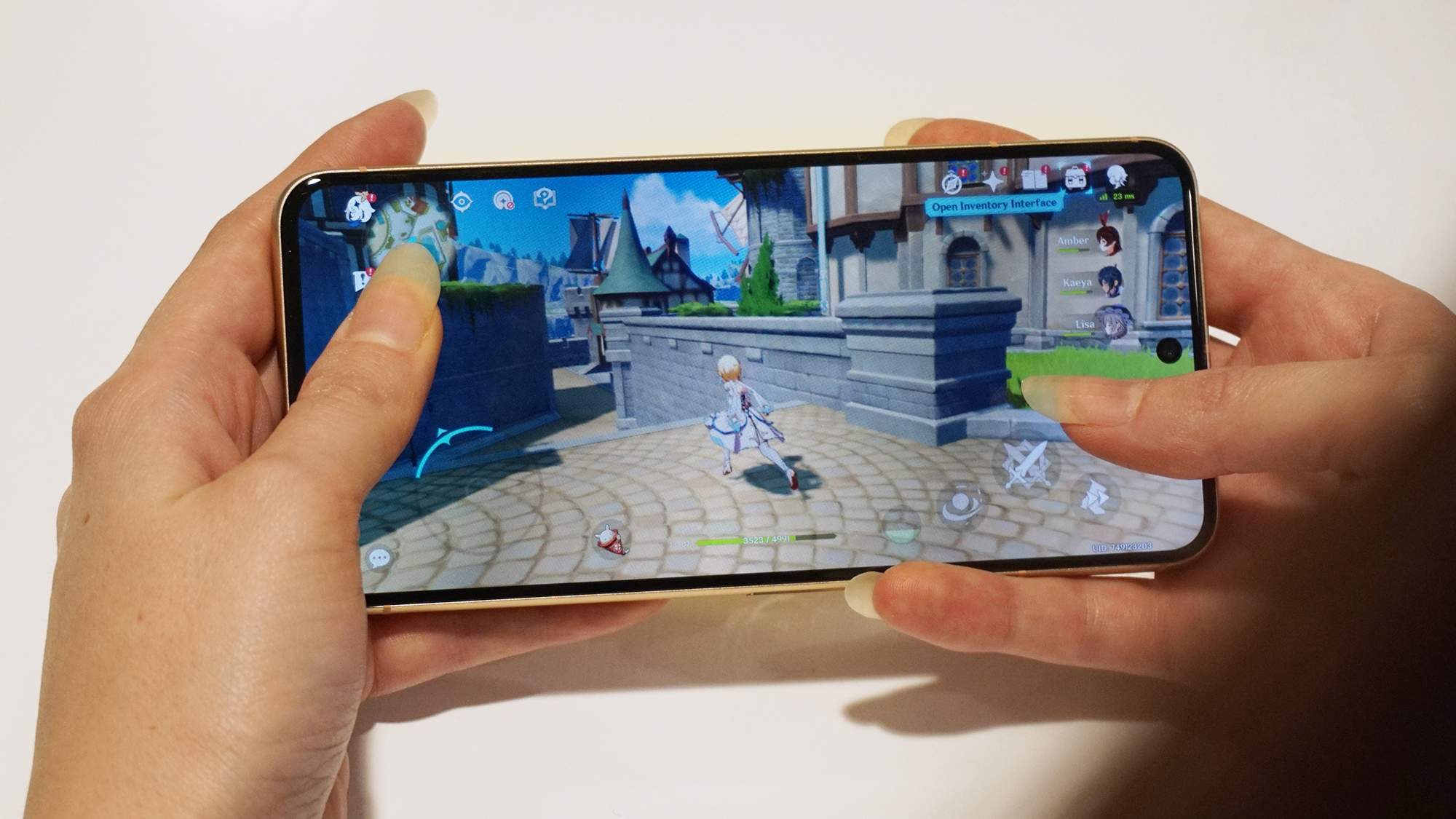
In most areas, the Pixel 8 manages to keep itself in close enough contention with the iPhone 15 Pro to make this an interesting fight, especially when you make allowances for that price differential. But that’s simply not the case when it comes to performance.
Let’s not mince words here: the iPhone 15 Pro obliterates the Pixel 8 for raw speed. Apple’s custom A17 Pro chip is more than a single generation ahead of Google’s Tensor G3, at least when it comes to CPU and GPU performance. The benchmark scores aren’t even close here.
True, the Pixel 8 appears to match the iPhone 15 Pro on memory, with both supplying 8GB of RAM. But given that Android is way more memory-hungry than iOS, that doesn’t really result in a tie.
Of course, in day to day usage, the iPhone’s huge performance advantage won’t manifest itself all that much, if at all. Both of these phones feel fast and fluid, and can run almost anything you throw at them with ease.
Just about the only area in which the iPhone makes its performance advantage known is when boot up advanced games, where Apple’s device runs faster and on higher graphical settings. We also highly doubt that Resident Evil Village, Assassin’s Creed Mirage, and Death Stranding will be coming to Pixel 8 any time soon, unlike the iPhone 15 Pro.
With that said, we should note that Google prioritises AI over pure processing grunt. The Pixel 8 might not chuck around polygons as fluidly as the iPhone 15 Pro, but it can pull tricks like real time transcription, speedy voice typing, and those clever image editing tricks mentioned above.
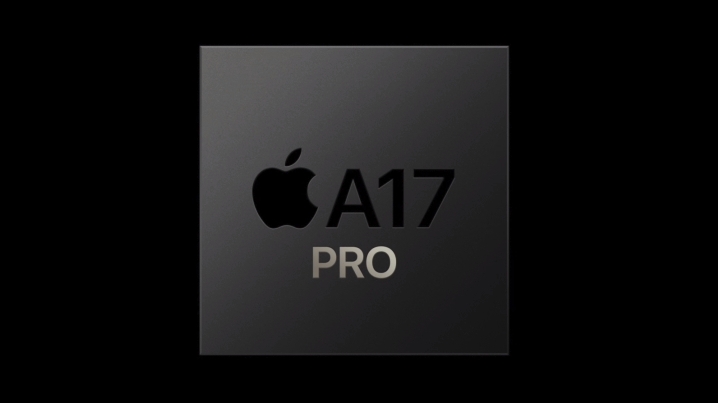
One matter that needs addressing here is that of performance headroom, with the likelihood that the iPhone 15 Pro will remain feeling faster for longer. That comparison is more pertinent than ever, with Google taking the fight to Apple in promising seven years of software updates for the Pixel 8. Apple makes no such guarantee, but tends to support its devices for five years.
That’s laudable on Google’s part, but how will the Pixel 8 run at around the year five mark, we wonder, if it’s already at the bottom of the flagship food chain? It’s a bit of an unknown, whereas we know from experience that the iPhone 15 Pro will probably still run pretty well near the end of its official lifespan.
Talking of software, that’s likely to be the main deciding factor here alongside budget. If you’ve bought all your apps on Apple’s App Store, and you run a MacBook and an iPad, it makes sense to stick with the iPhone. If you have a stack of Google Play Store purchases, an Android tablet, and a Windows laptop, you’ll have a more seamless experience with the Pixel.
Either way, you’re getting a brilliantly crisp, modern, fluid operating system. Both Android and iOS are mature platforms these days, with a fair amount of overlap on core features. You really can’t go wrong with either.
Google Pixel 8 vs iPhone 15 Pro: battery
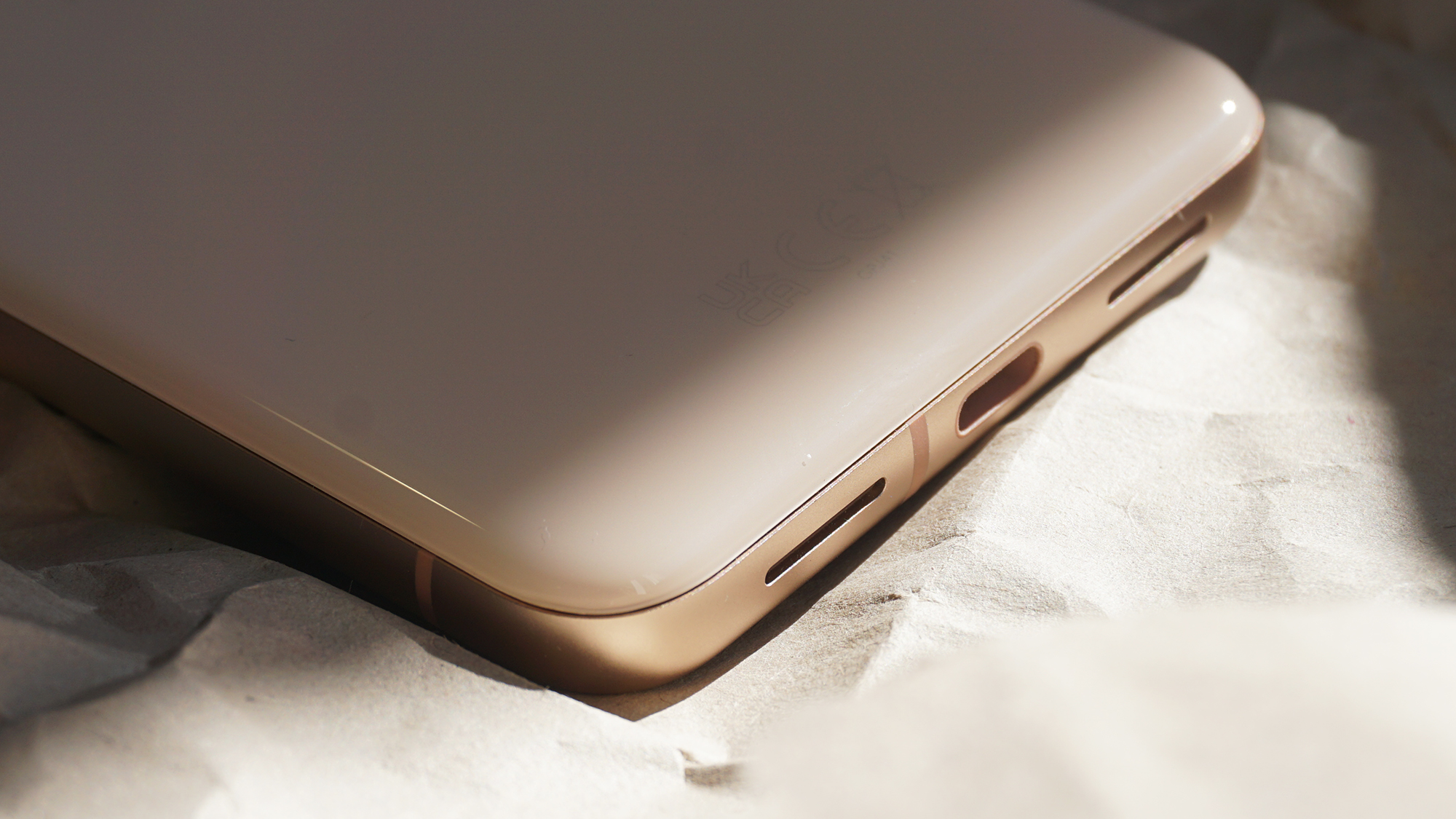
The Pixel 8 runs on a 4,575mAh battery, which dwarfs the iPhone 15 Pro’s 3,274mAh cell. An easy win for the Google phone then. Well, not quite.
We’ve already mentioned the different way in which Android handles its resources, and that includes battery usage. Apple’s iOS is a little more frugal, especially with its more efficient chip and display.
It results in similar all-day stamina from both phones. We used the same reviewer for both phones, and they managed to get an average of 5.5 hours of screen-on time with the iPhone 15 Pro and 6 hours with the Pixel 8. With the usual margin for error applied in such metrics, you could say they performed roughly evenly.
When it comes to recharge time, both phones support up to 27W wired charging. Both can go from empty to just over 50% in 30 minutes, once you’ve supplied your own charger. Neither phone bundles them in, which is a bit of a drag.
The Pixel supports up to 18W wireless charging with the second-generation Pixel Stand, or 12W with a generic Qi charger. The iPhone 15 Pro can support 15W wireless charging with a dedicated MagSafe charger (which handily self-aligns), or 7.5W Qi charging.
Google Pixel 8 vs iPhone 15 Pro: verdict
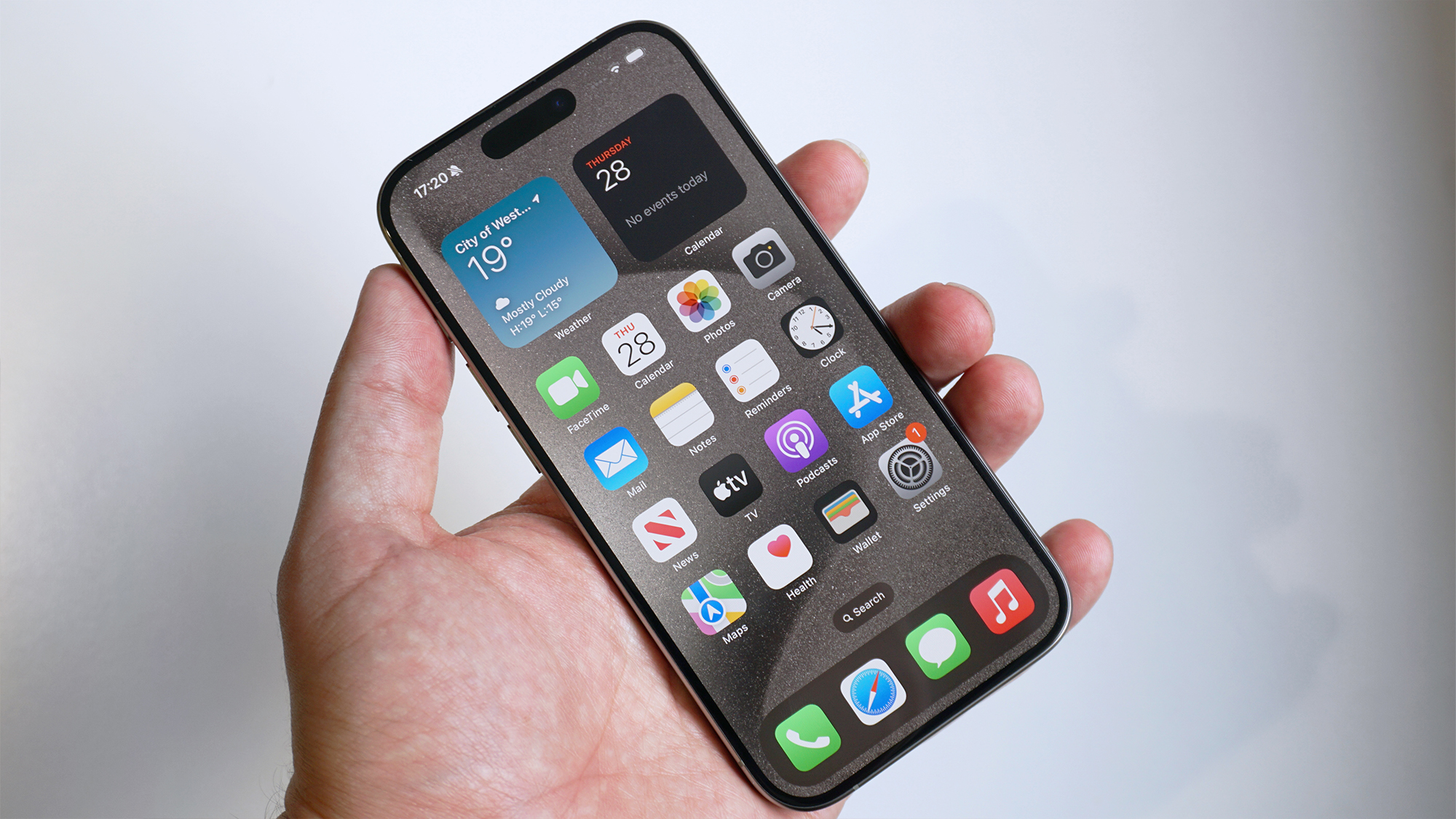
The iPhone 15 Pro is quite clearly a better phone than the Google Pixel 8 by most metrics. Its performance is leagues ahead, its camera system is better and more flexible, and its design and display are more advanced.
Few of the iPhone 15 Pro’s advantages could be deemed all that significant in isolation. Taken together, however, we’d suggest that they comfortably justify the $300 / £300 premium.
Of course, there’s much more to it than that. For anyone shopping around the Pixel 8’s price tag, the iPhone 15 Pro simply isn’t going to be a viable option. For such people, the Pixel 8 gives an outstanding approximation of a much more expensive phone.
If money is no object (up to a point), and you’re not particularly wedded to either iOS or Android, you should buy the iPhone 15 Pro with confidence. If money most definitely is an object, the Pixel 8 will get you 90% of the way to the Pro experience without breaking the bank.
For more phone showdowns, check out the Google Pixel 8 vs iPhone 15 Pro Max, Google Pixel 8 vs Google Pixel 7 and Google Pixel 8 vs Samsung Galaxy S23.
Get daily insight, inspiration and deals in your inbox
Sign up for breaking news, reviews, opinion, top tech deals, and more.